AP Biology: Unit 2 - Cell Structure and Function (Mrs. Majoros)
1/66
There's no tags or description
Looks like no tags are added yet.
Name | Mastery | Learn | Test | Matching | Spaced |
|---|
No study sessions yet.
67 Terms
plasma membrane
creates compartments within cells and barrier between intra- & extracellular
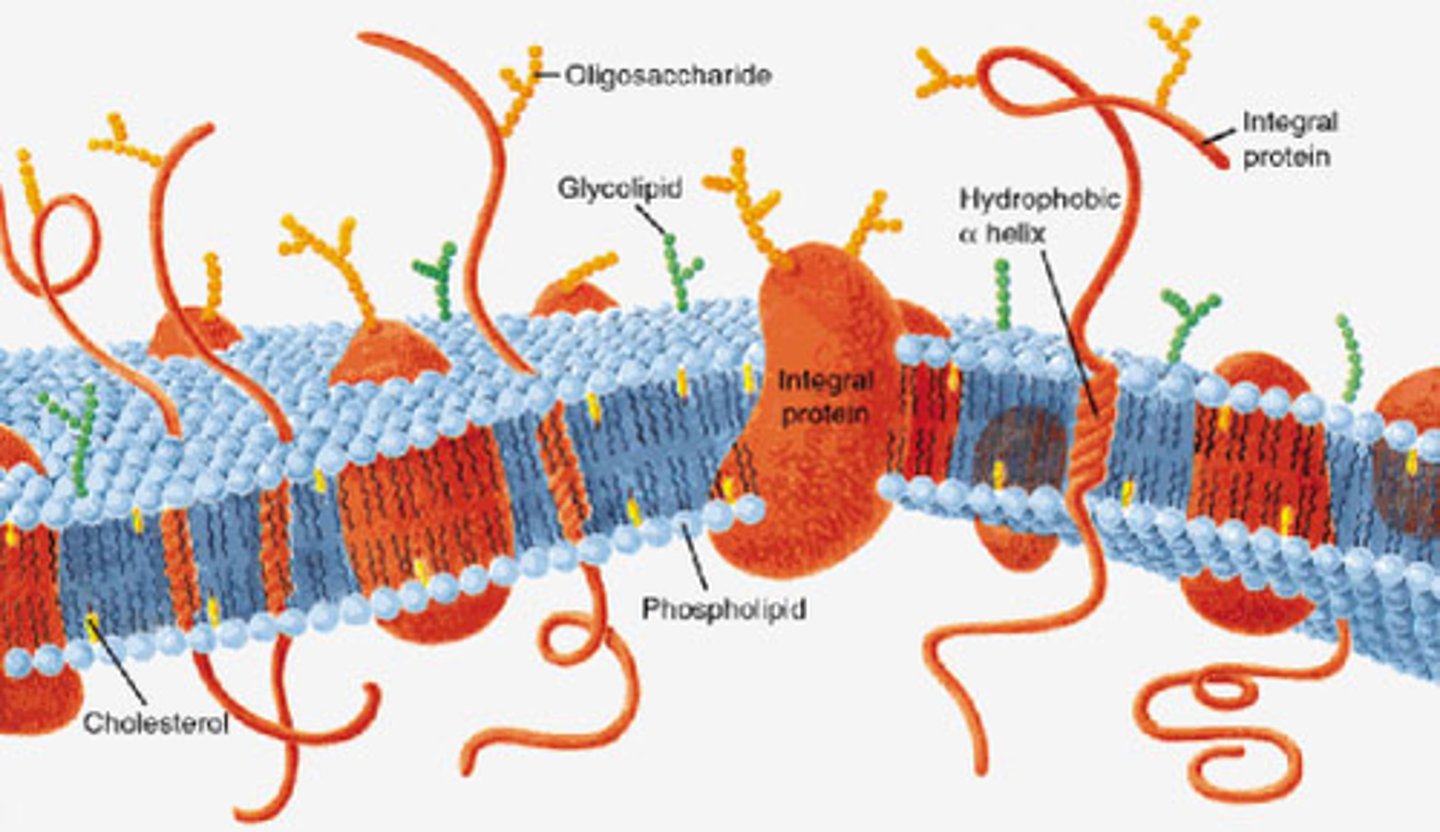
selectively permeable
rules of chemistry determine movement across membrane.
phospholipids
membrane lipid structure
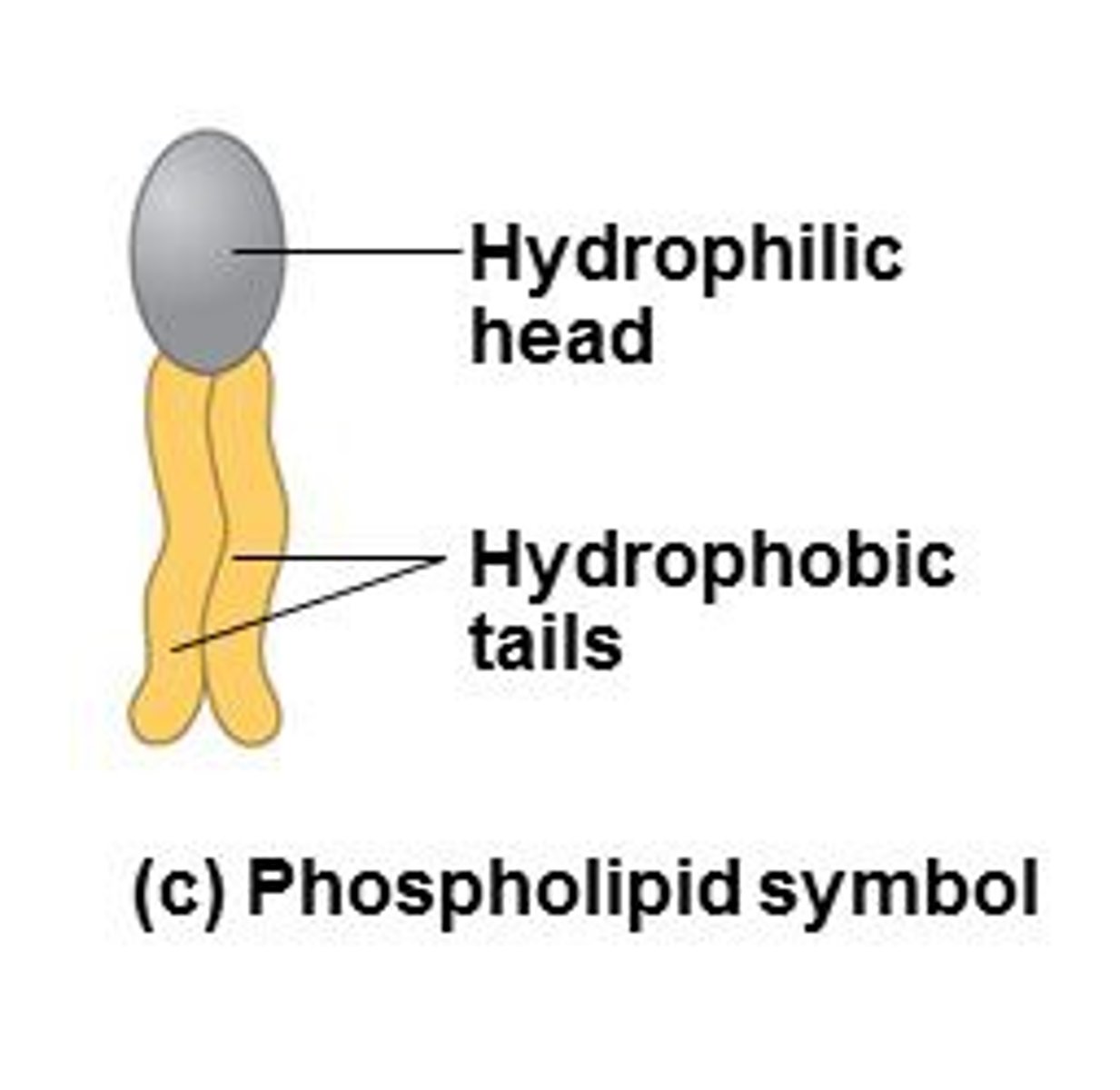
lipids and proteins
main macromolecules in membranes
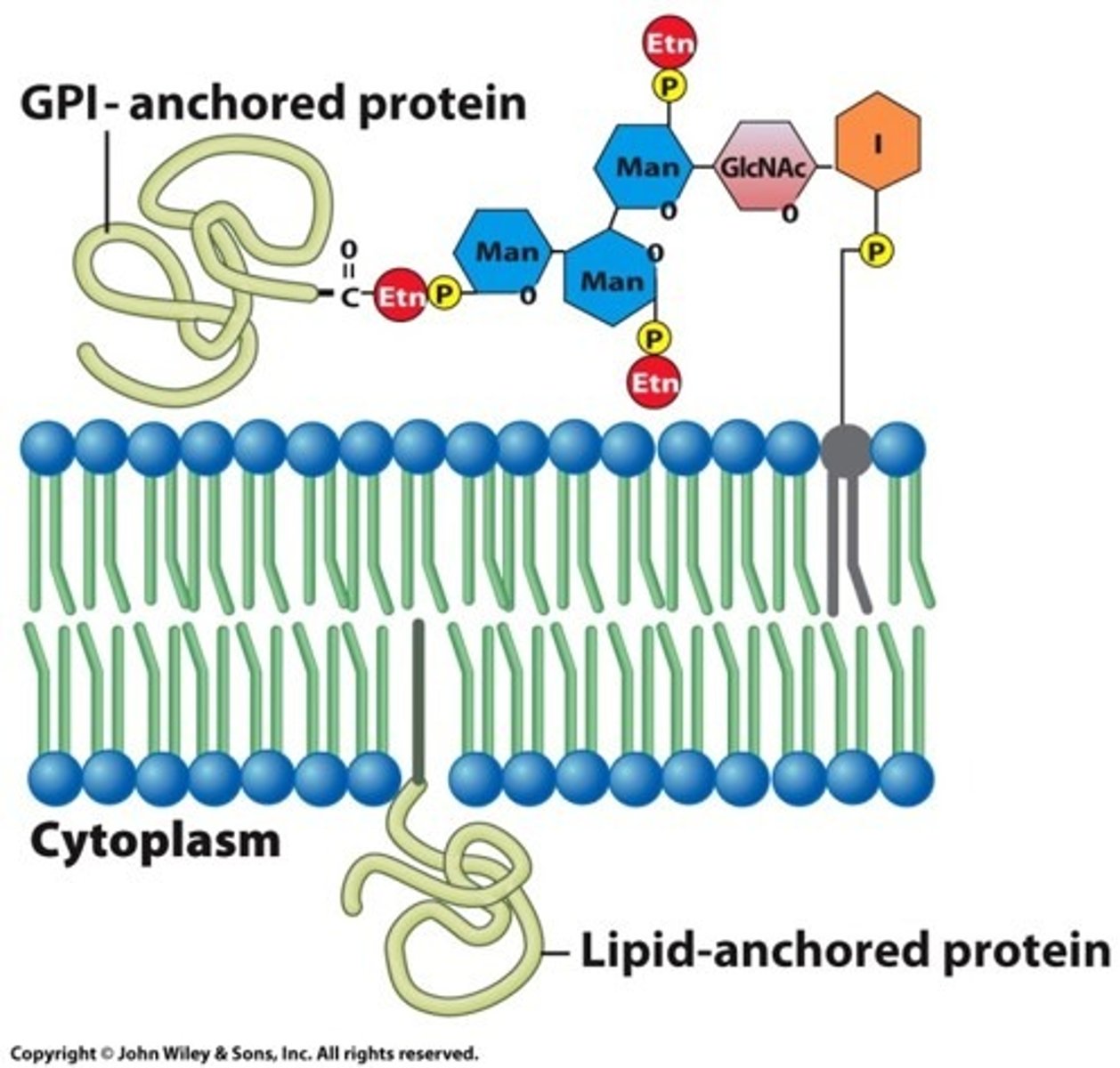
amphipatic molecules
have hydrophobic and hydrophilic regions
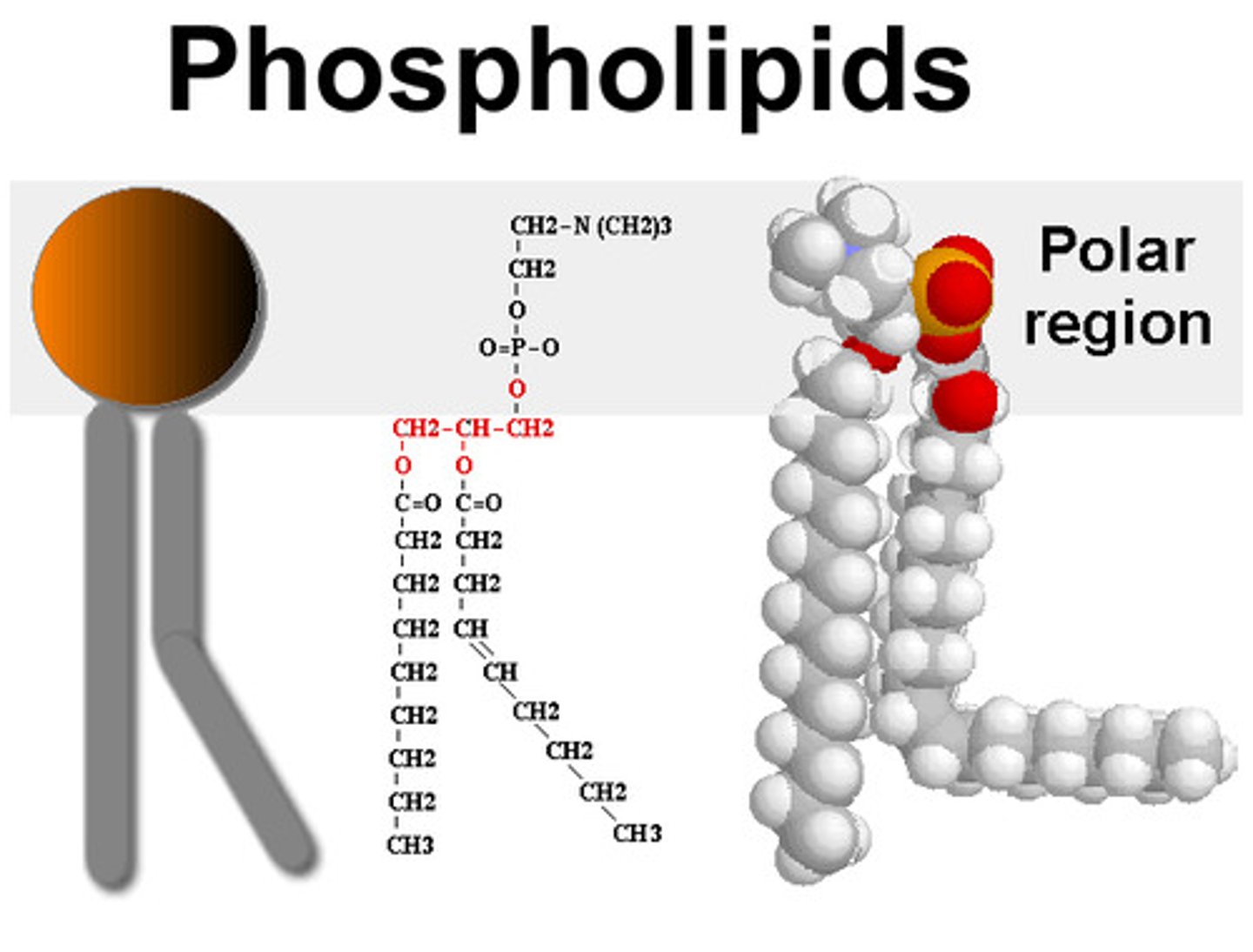
fluid mosaic model
The arrangement of phospholipids and proteins in biological membranes is described by the...
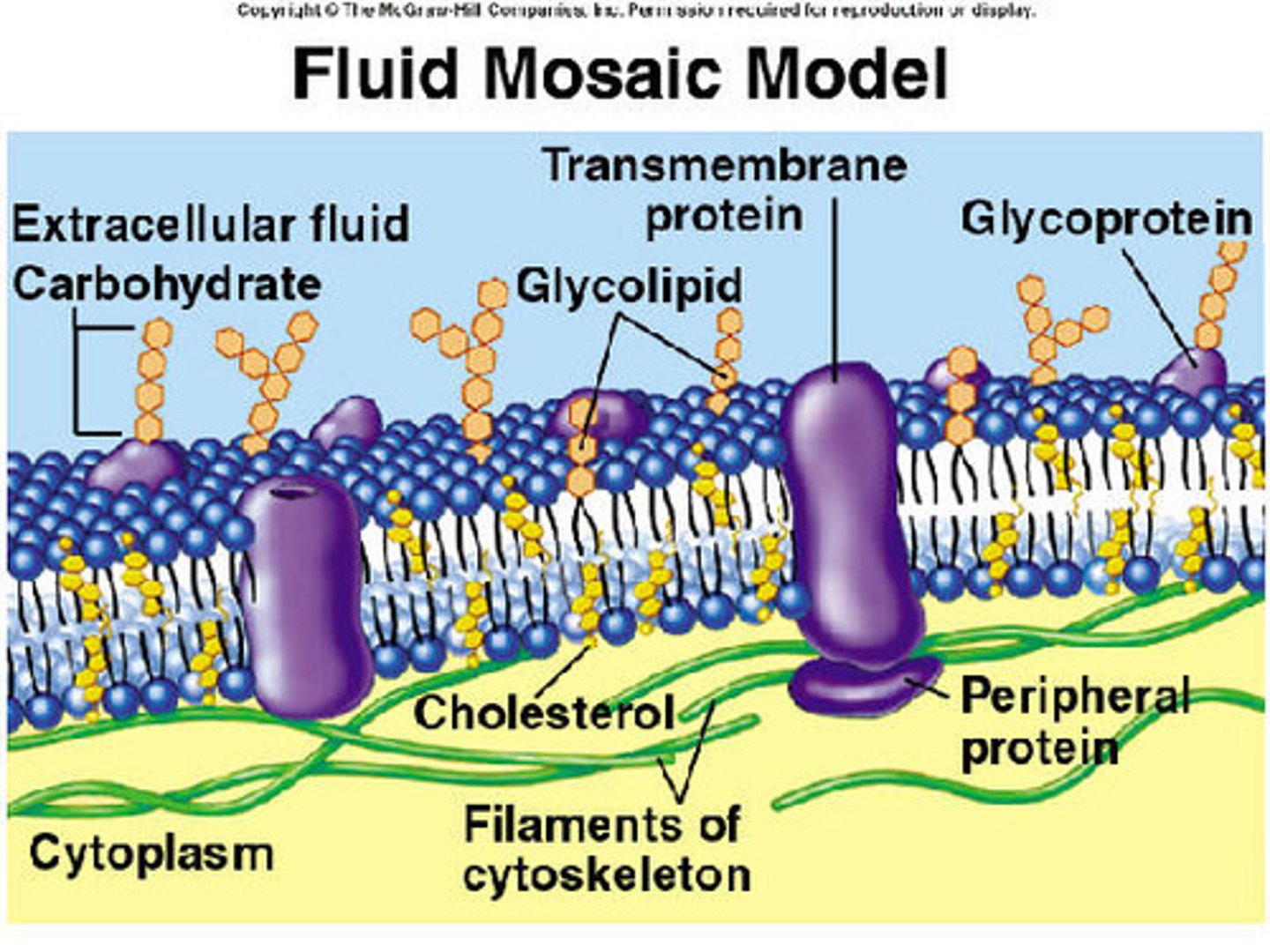
transmembrane proteins
the integral protein completely spans the membrane as...
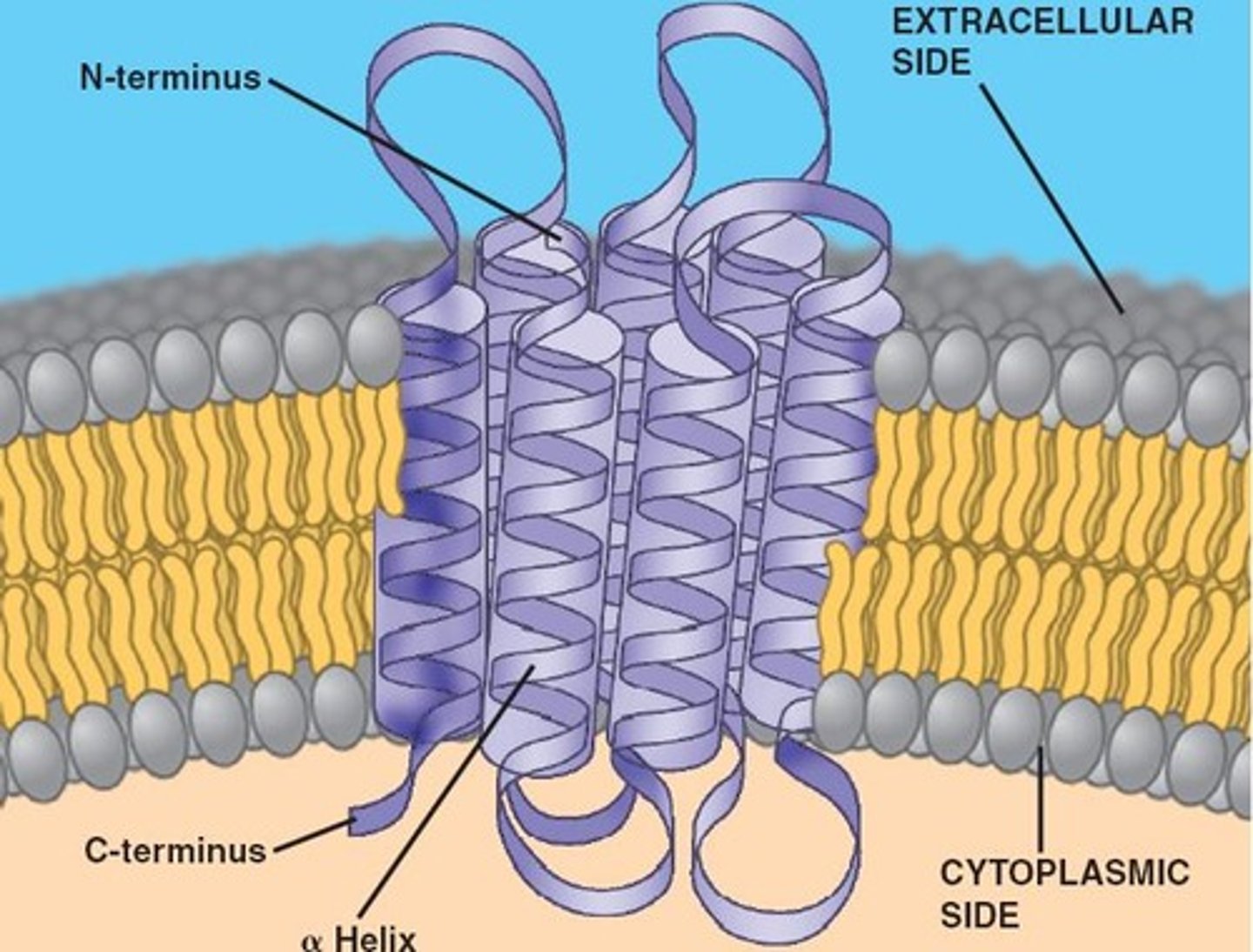
integral proteins
proteins that penetrate the hydrophobic interior of the lipid bilayer
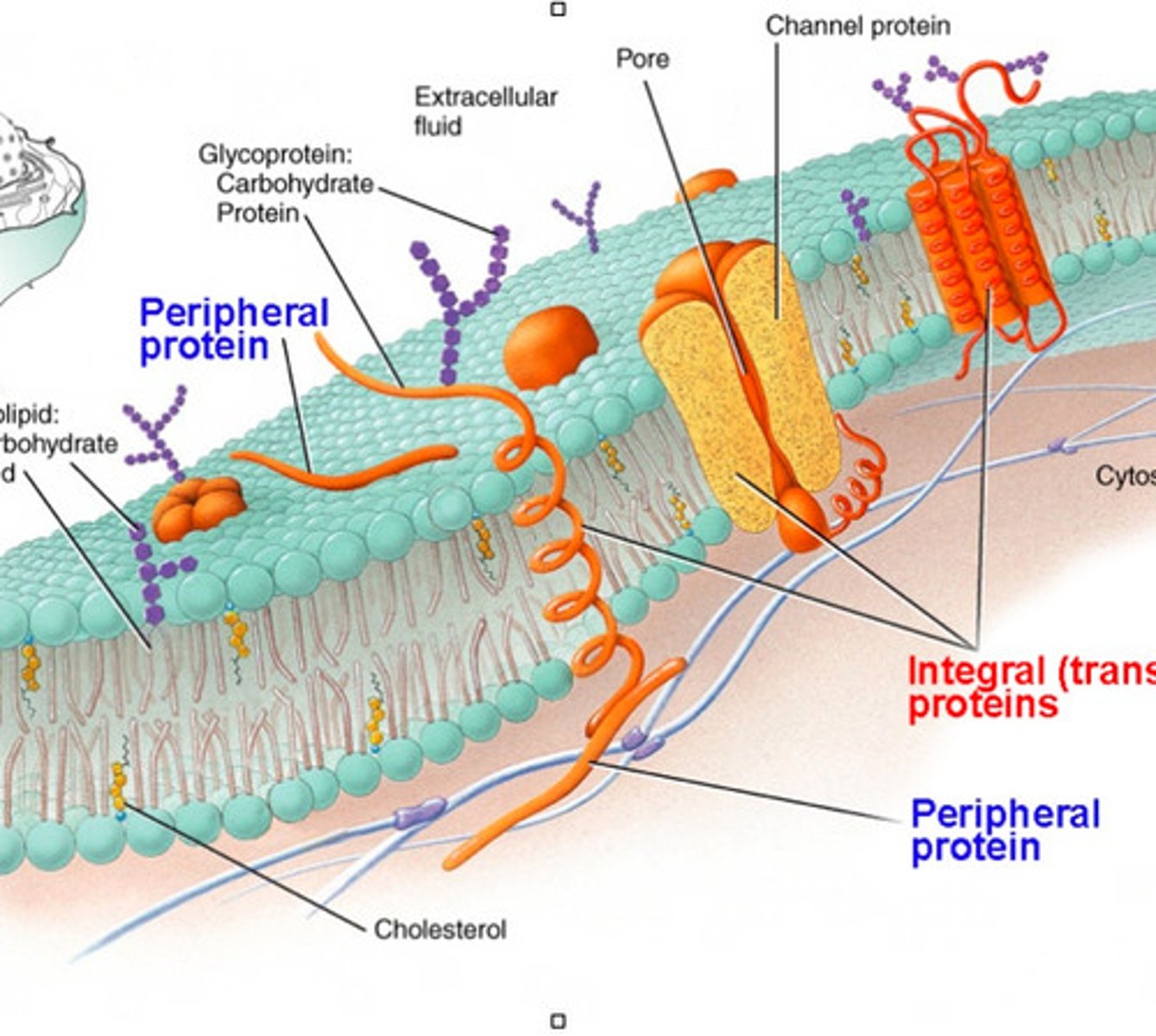
peripheral proteins
proteins that are not embedded in the lipid bilayer
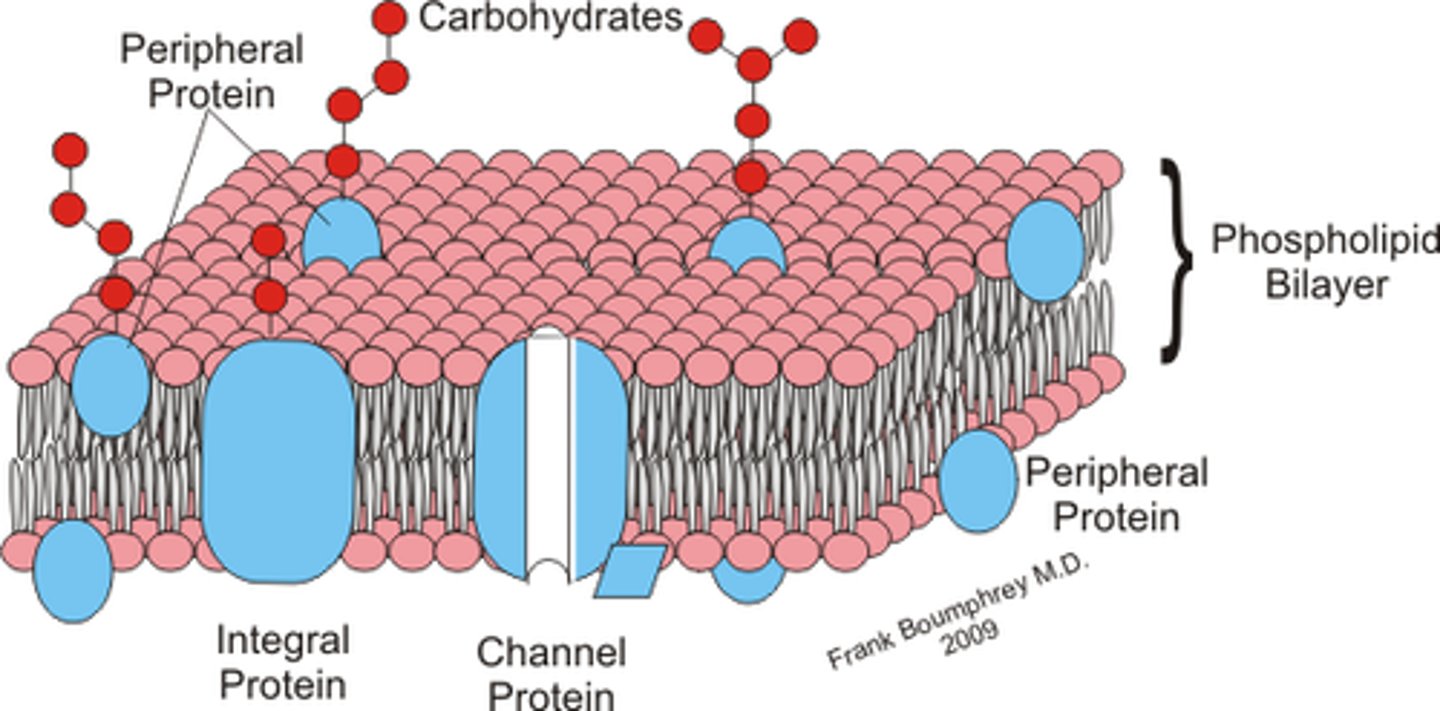
cell-cell recognition
the ability of a cell to disitnguish one type of neighboring cell from another.
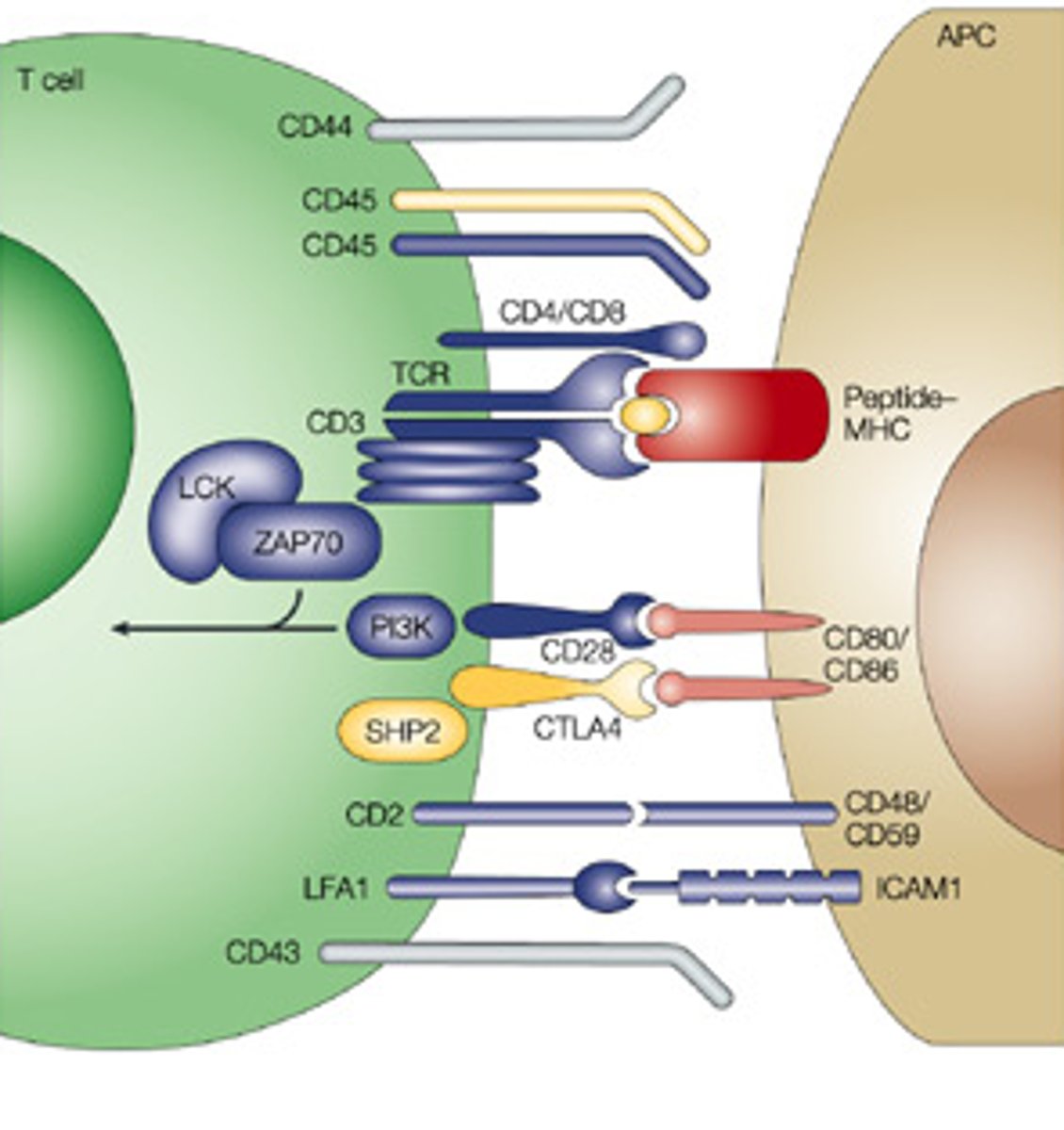
transport proteins
proteins that control movement of molecules across plasma membrane

channel proteins
transport proteins that have a hydrophilic channel that certain molecules or ions use as a tunnel though the membrane.
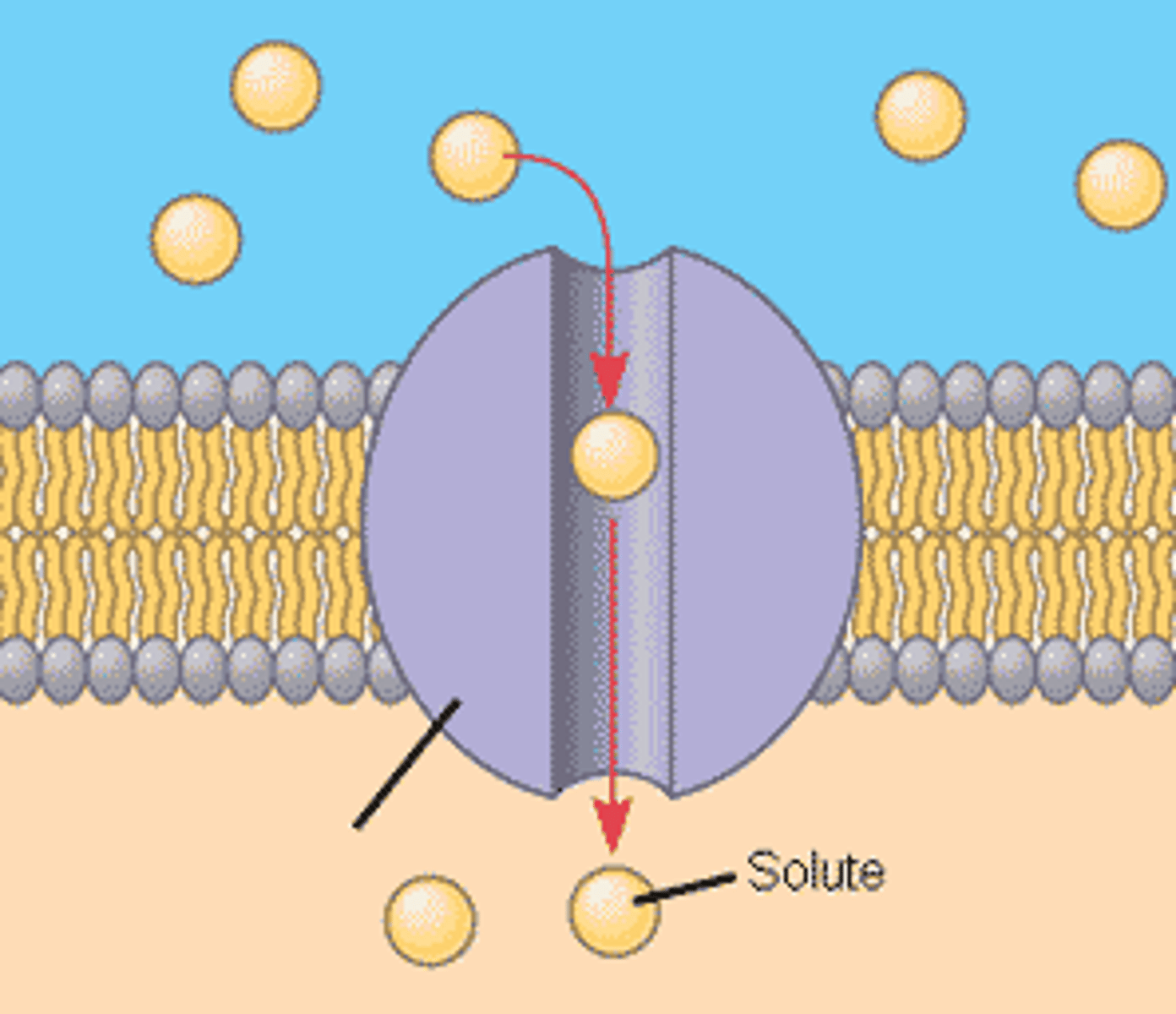
aquaporins
channel proteins that facilitate the passage of water
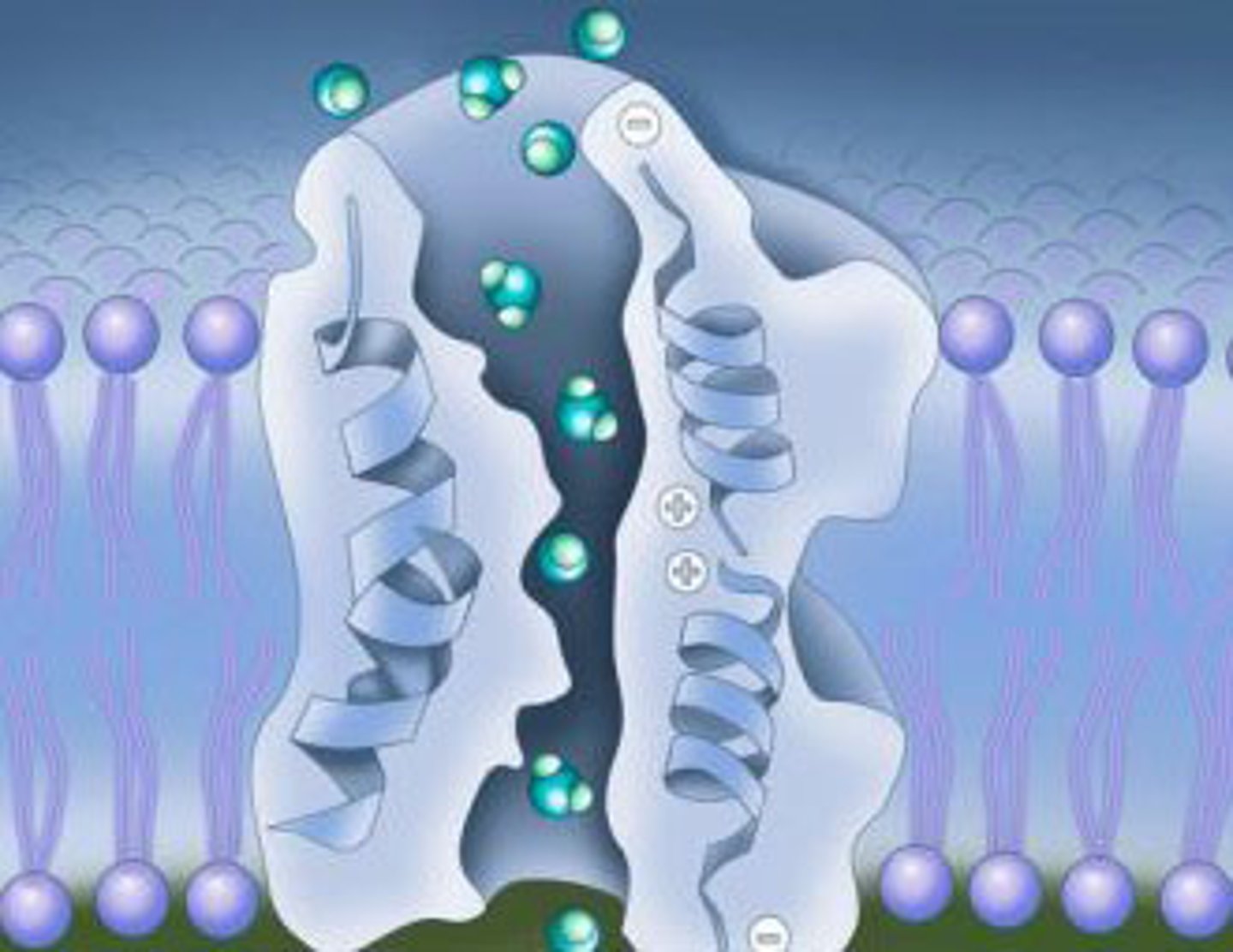
carrier proteins
transport proteins that bind to molecules and change shape to shuttle them across the membrane.
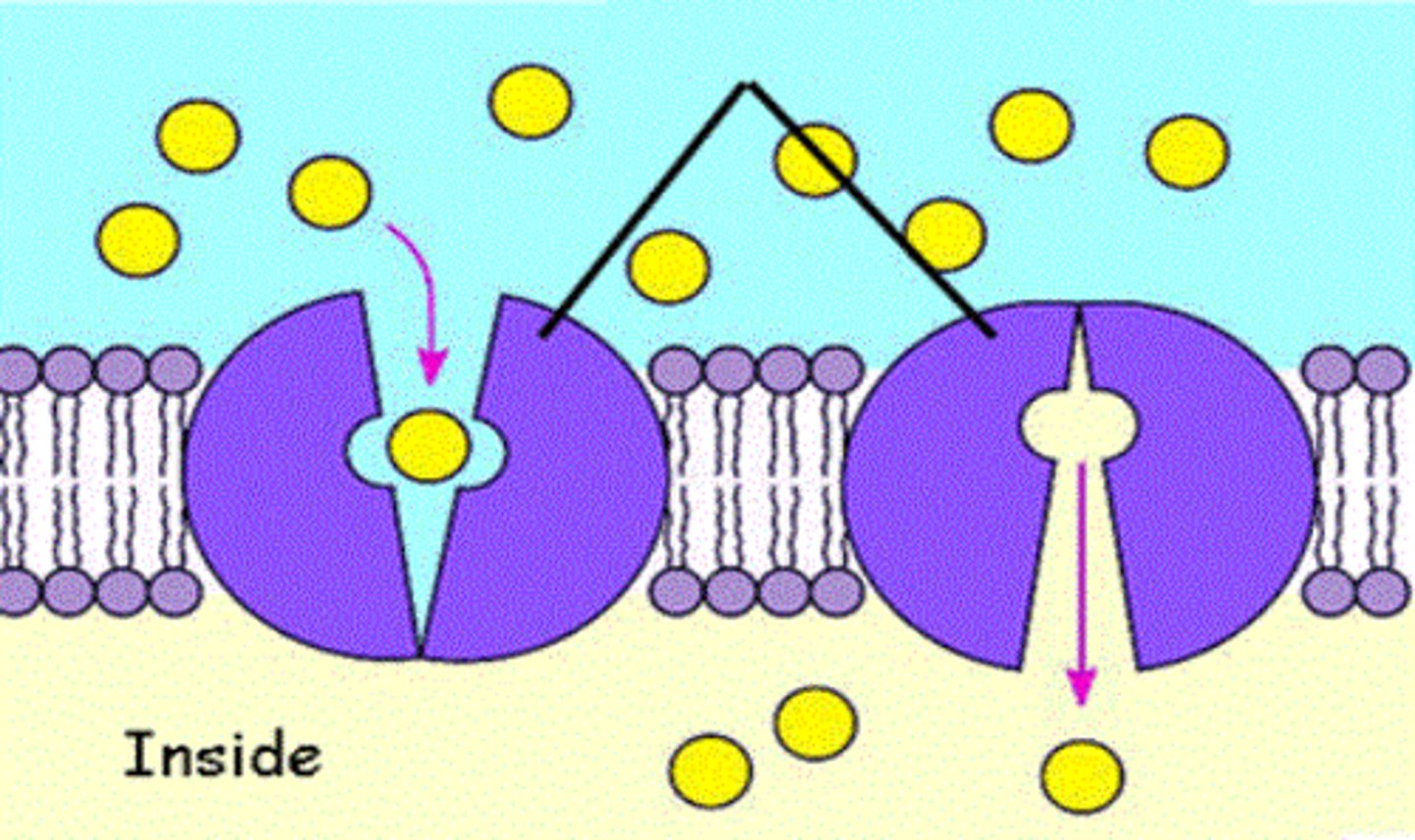
diffusion
movement of molecules of any substance to spread out in available space
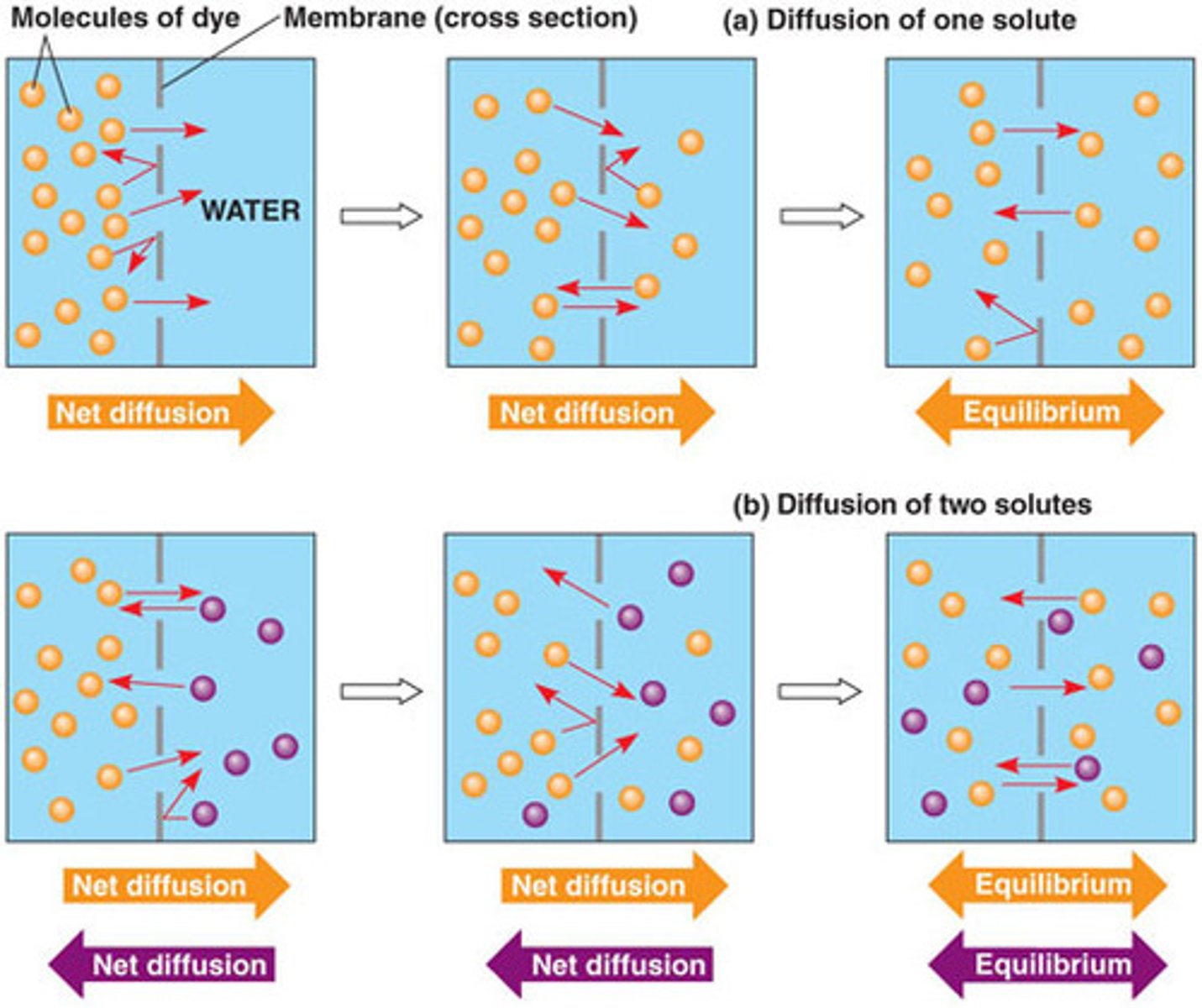
concentration gradient
difference in concentration within or between
2 areas
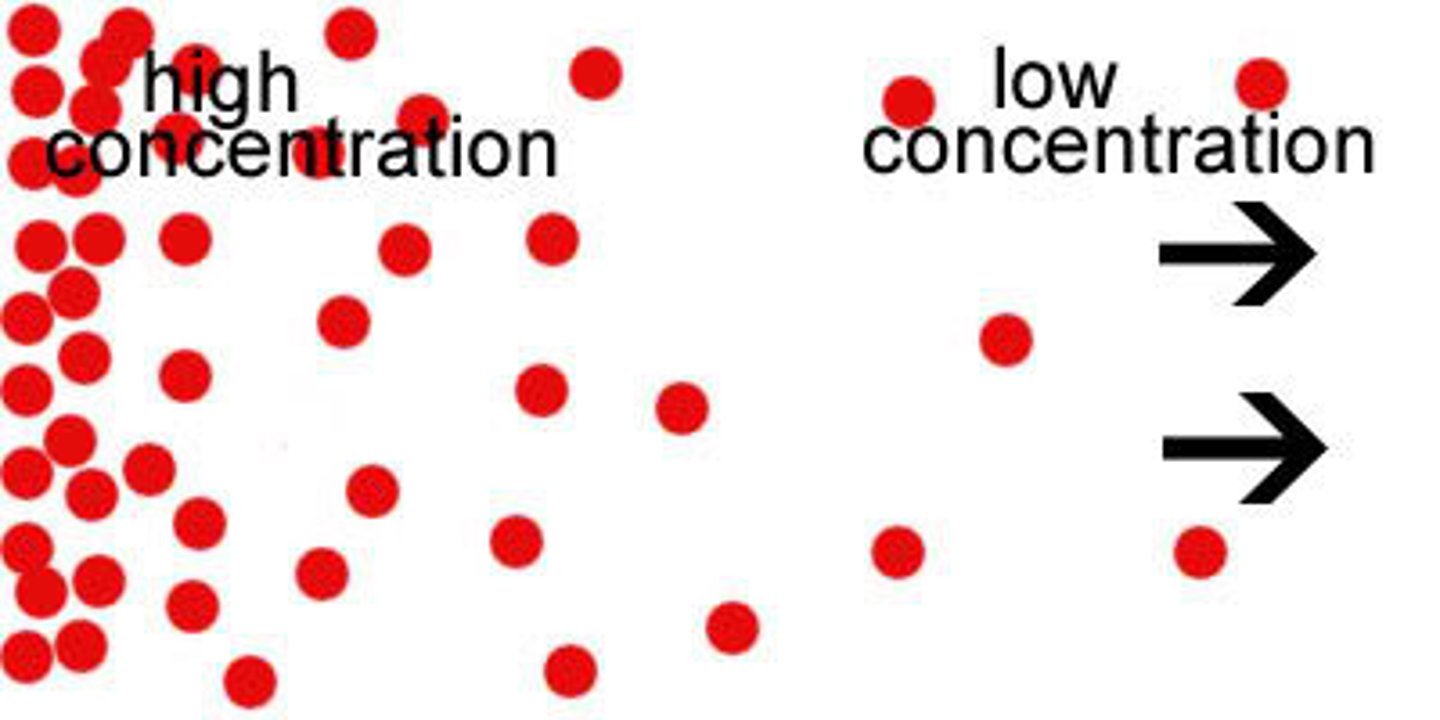
passive transport
the movement of substances across a cell membrane without the use of energy by the cell
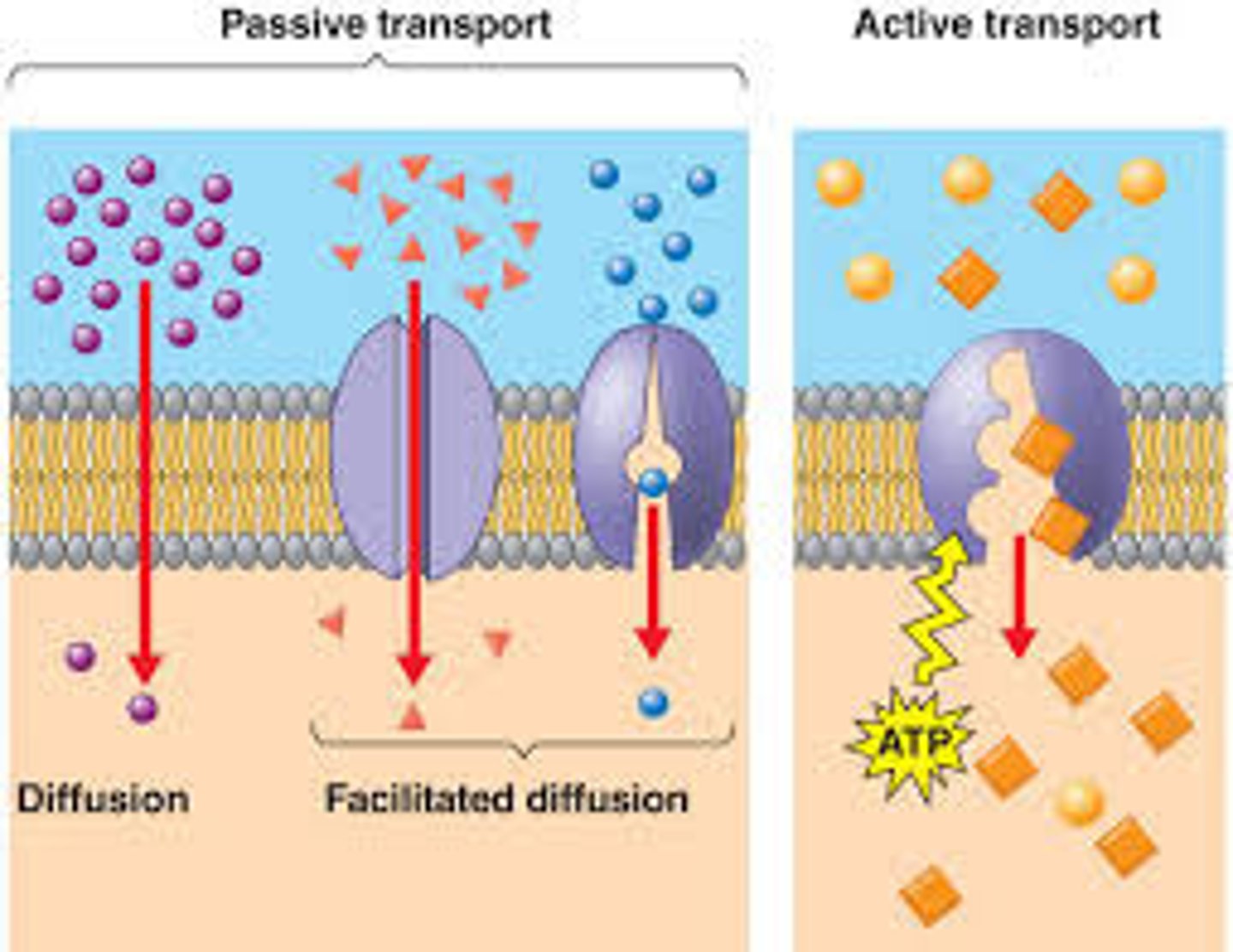
osmosis
the diffusion of water across a selectively permeable membrane
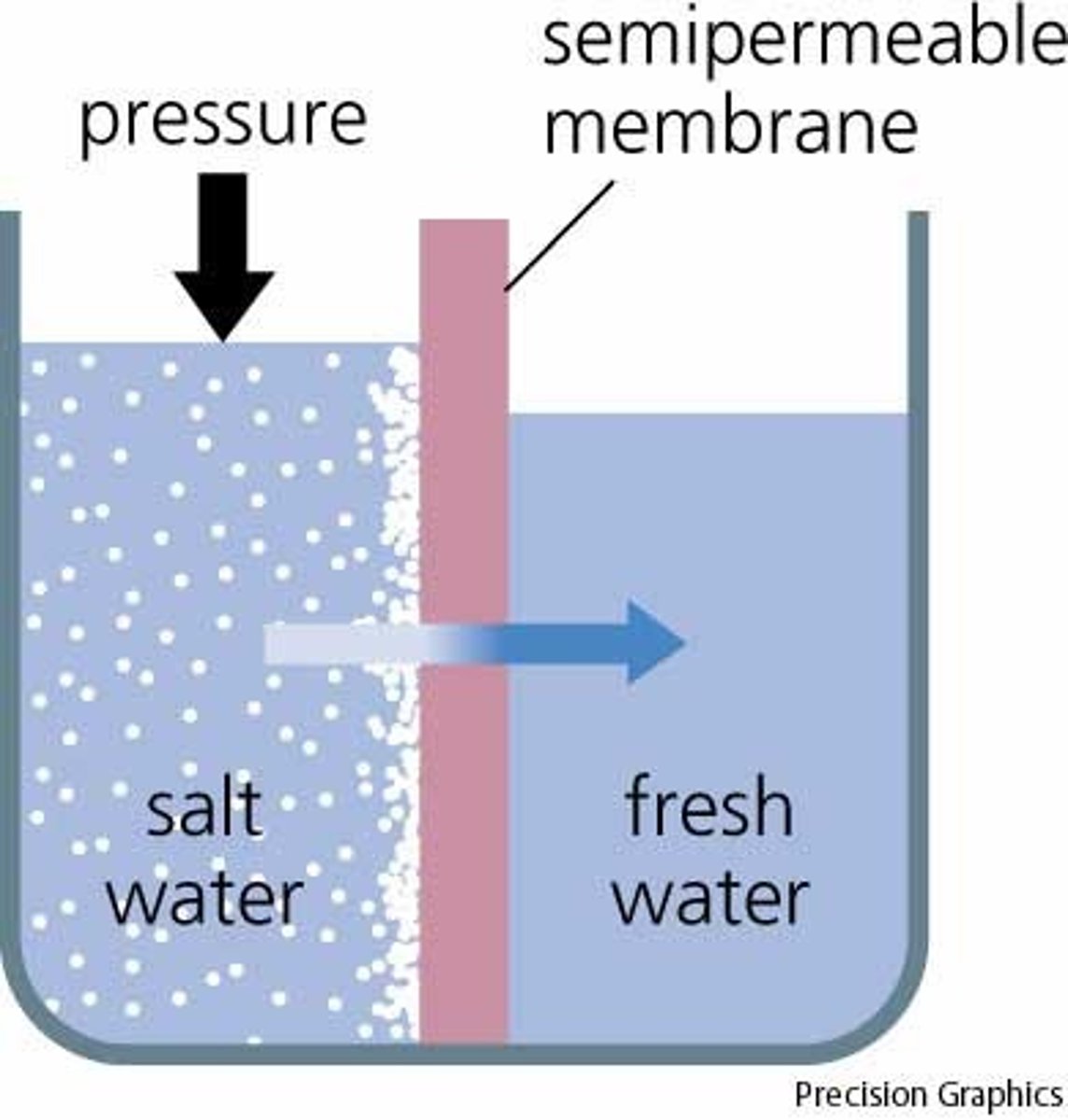
isotonic (animal cell)
if a cell with no cell wall is immersed in an enviroment where there is no net movement of water across the plasma membrane. Stays the same.
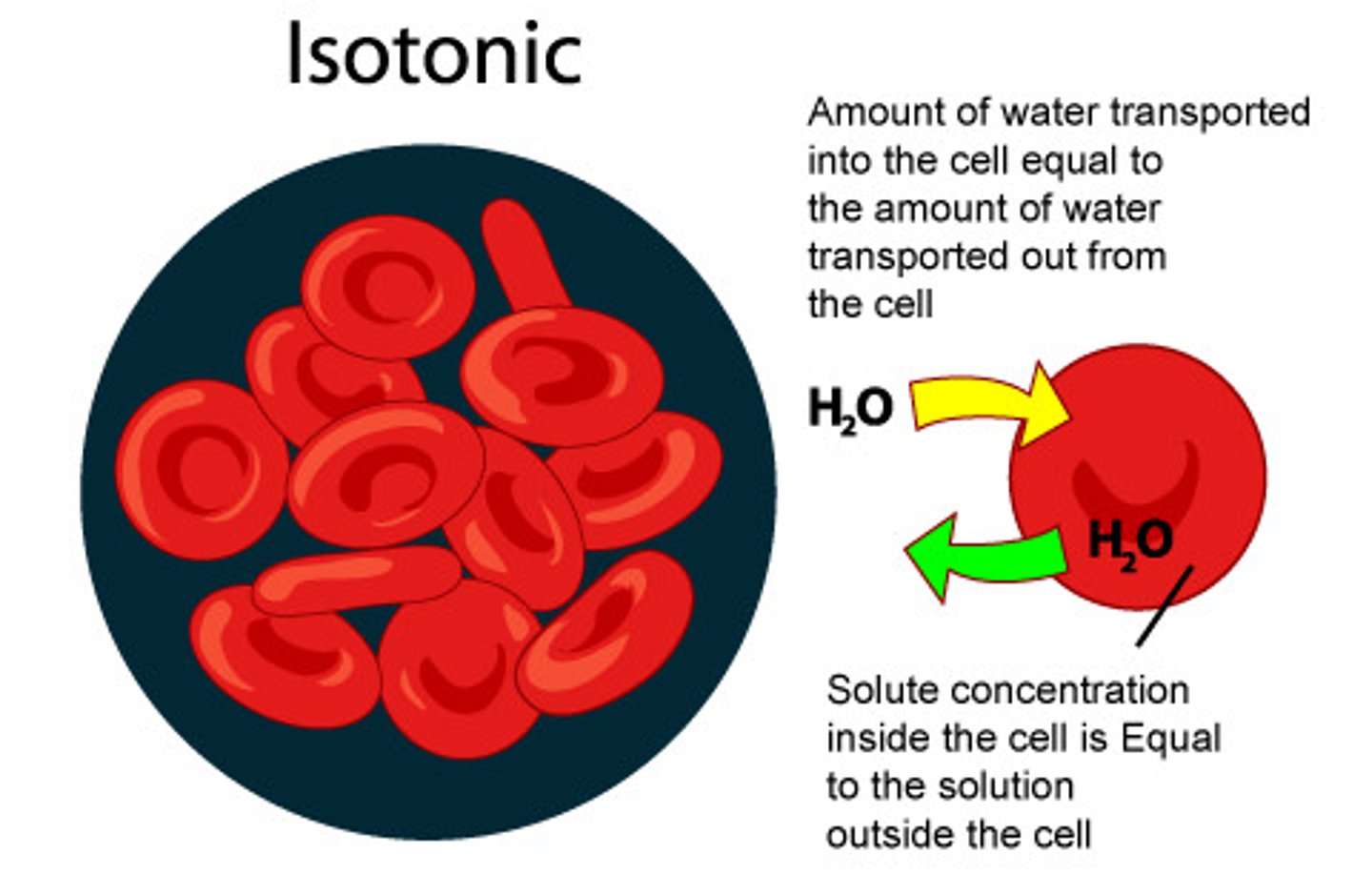
hypertonic (animal cell)
when the cell is immersed in a solution where it loses water to its environment, shrivels and probably dies.
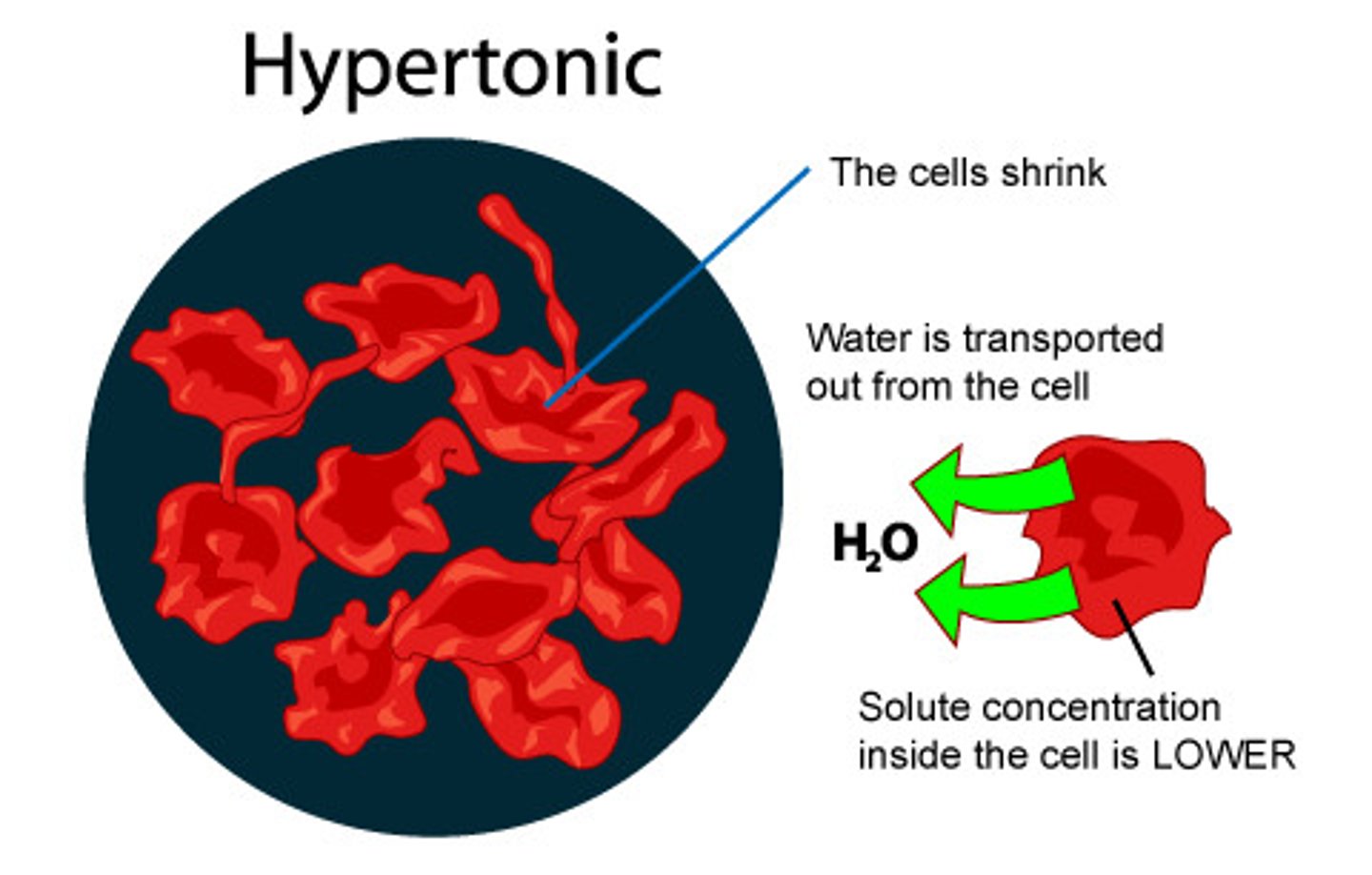
hypotonic (animal cell)
when a cell is immersed in a solution, water enters the cell faster than it leaves, it swells and lyses (explodes) like an overfilled water balloon.
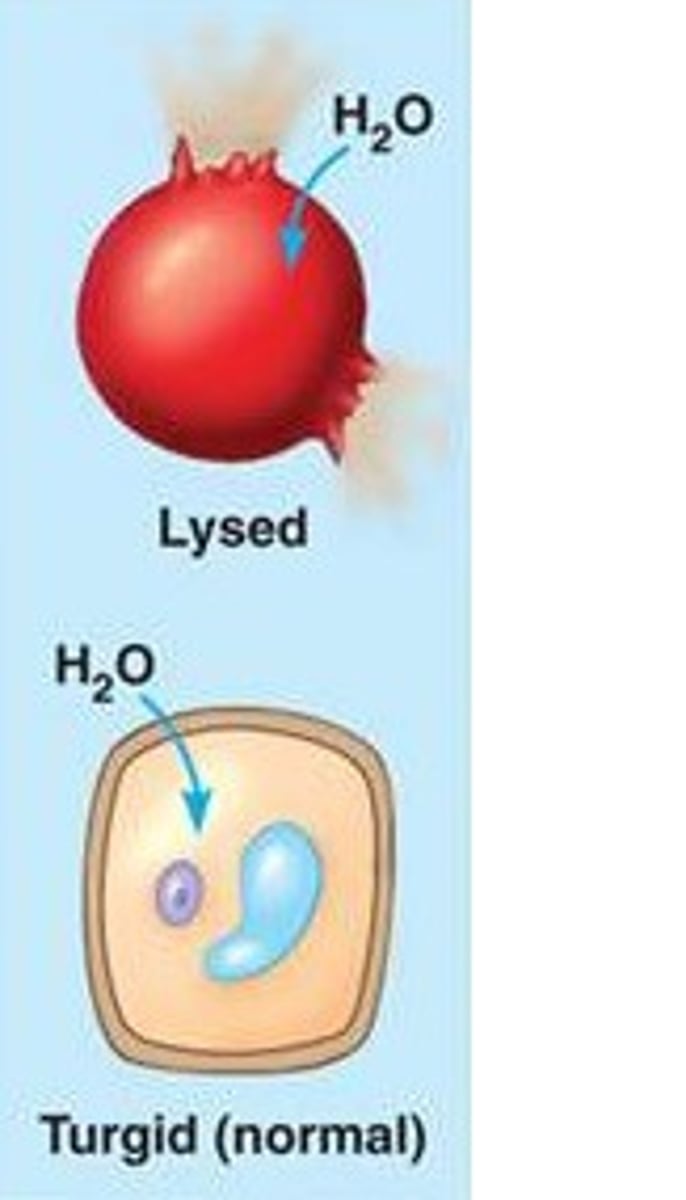
osmoregulation
adaptations that control of water balance across plasma membranes
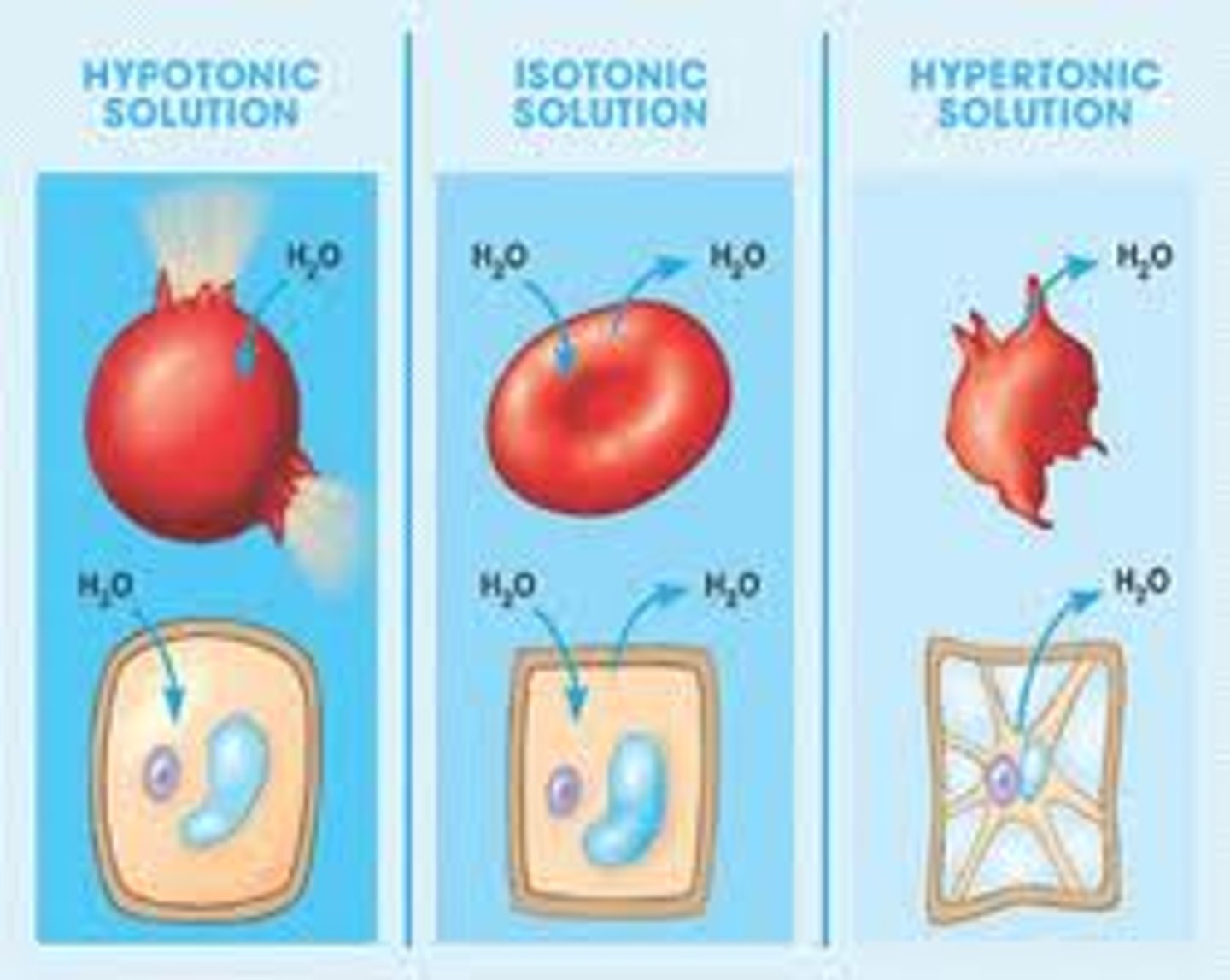
paramecium
is a protist that is hypertonic to the pond water in which it lives.
turgid
when the plant cell is very firm, which is a healthy state for most plant cells.
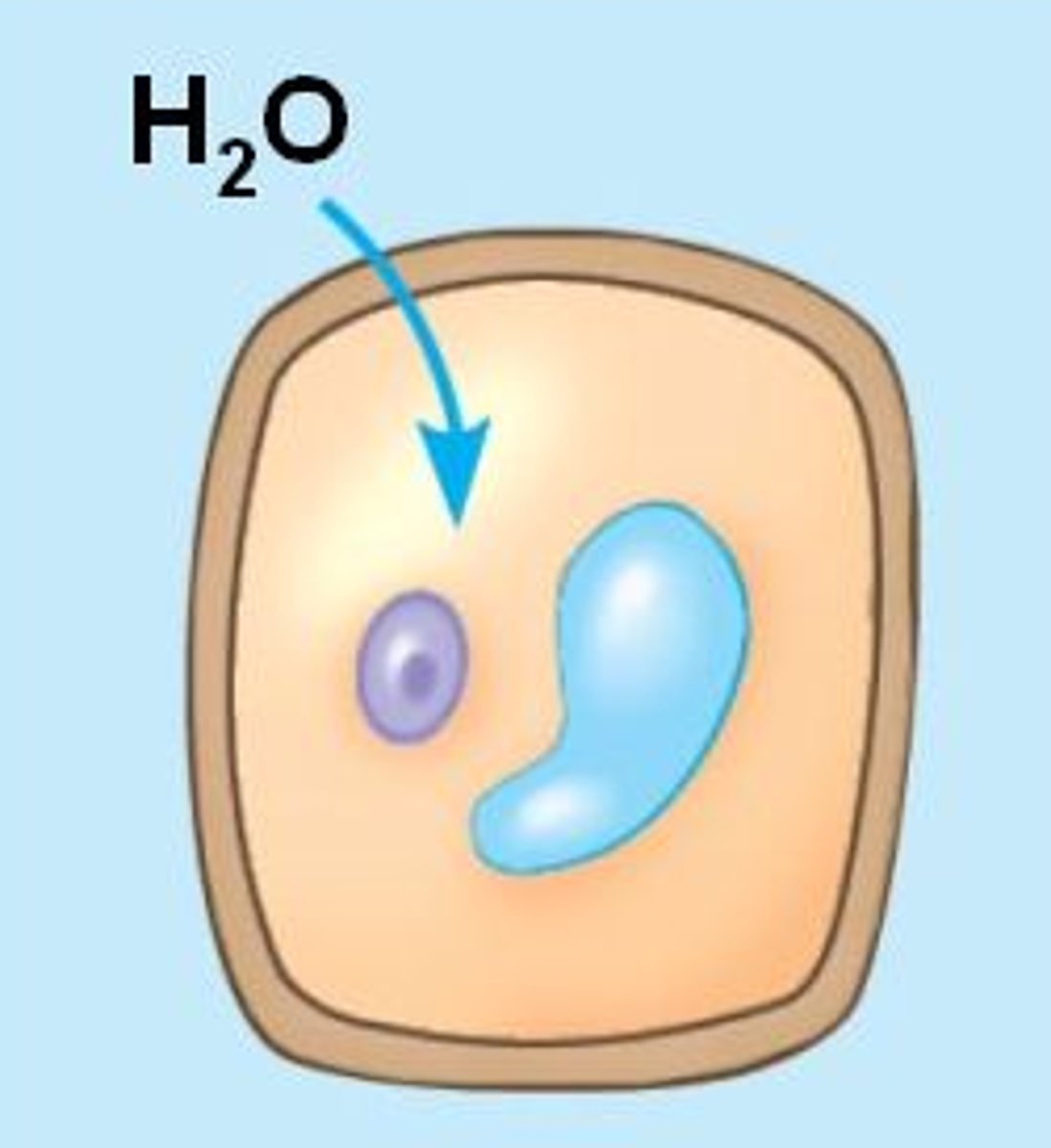
hypotonic (plant cell)
when a plant cell is immersed in a __________ solution the cell contents swell due to osmosis until the elastic cell wall exerts turgor pressure on the cell that opposes further water outake.
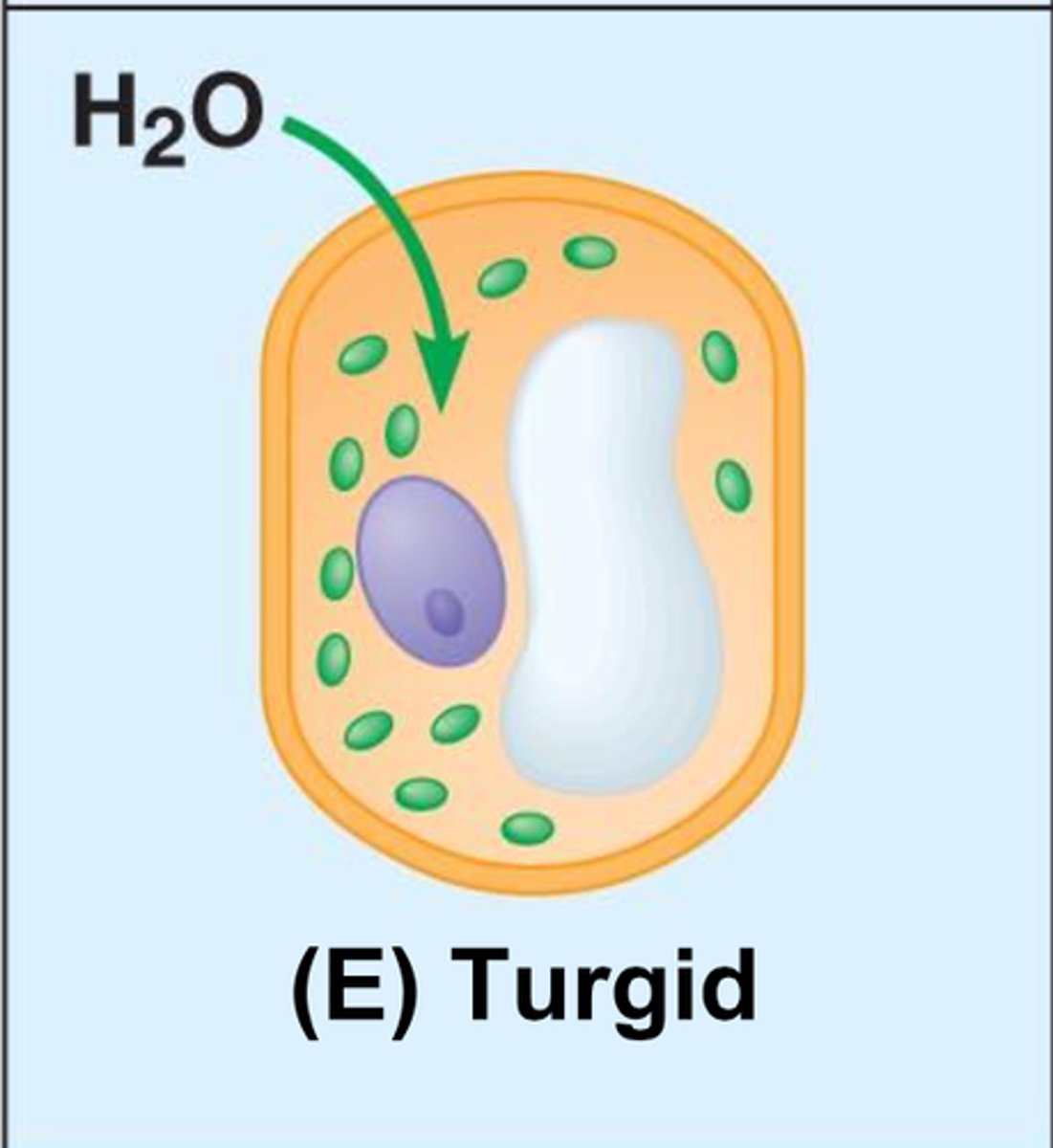
isotonic (plant cell)
when a plant cell is immersed in a _______ solution; there is no net movement. The cell becomes flaccid and the plant may wilt.
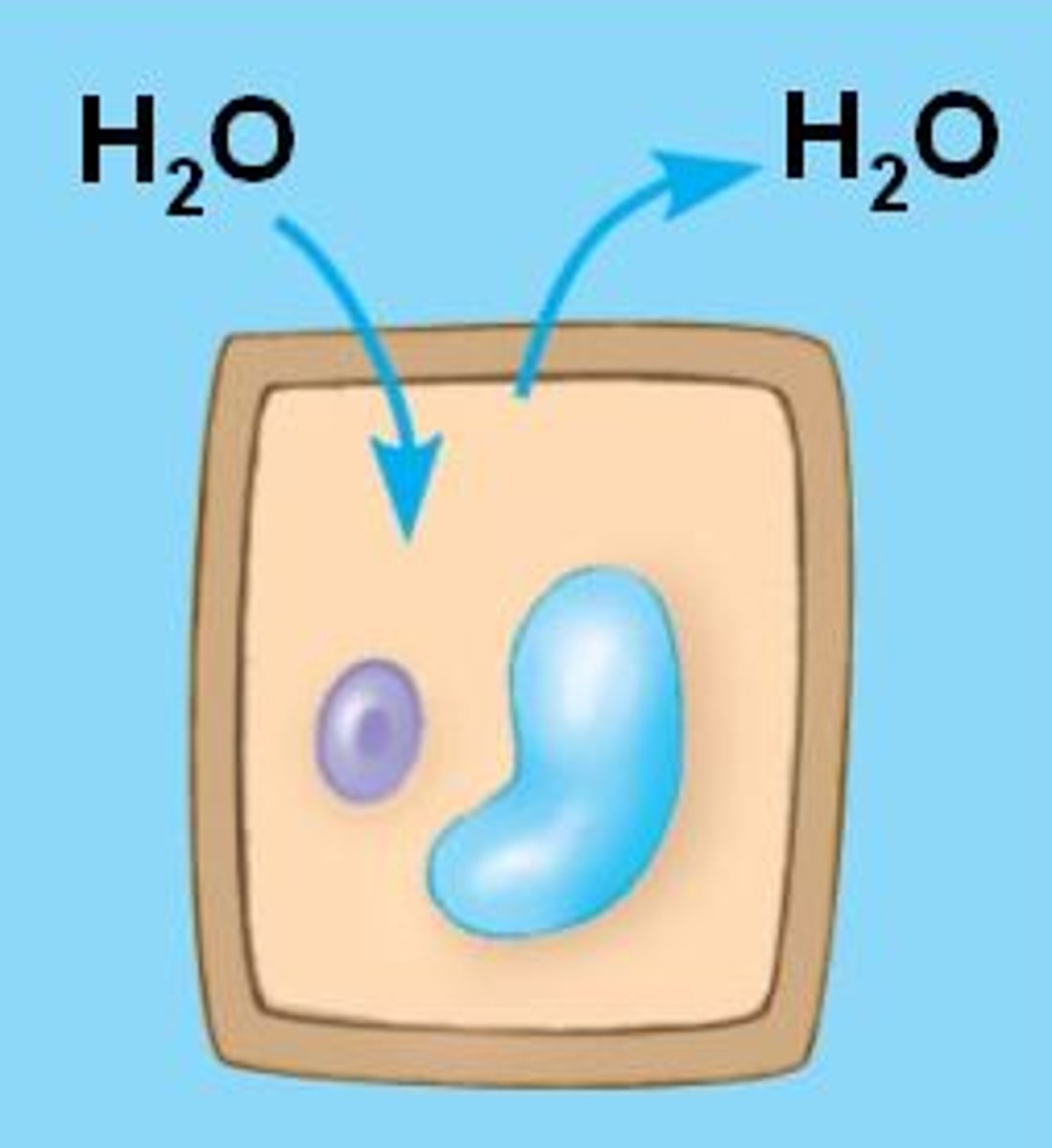
flaccid
limp, not firm or strong (If a plant is not watered enough, its leaves become droopy and flaccid.)
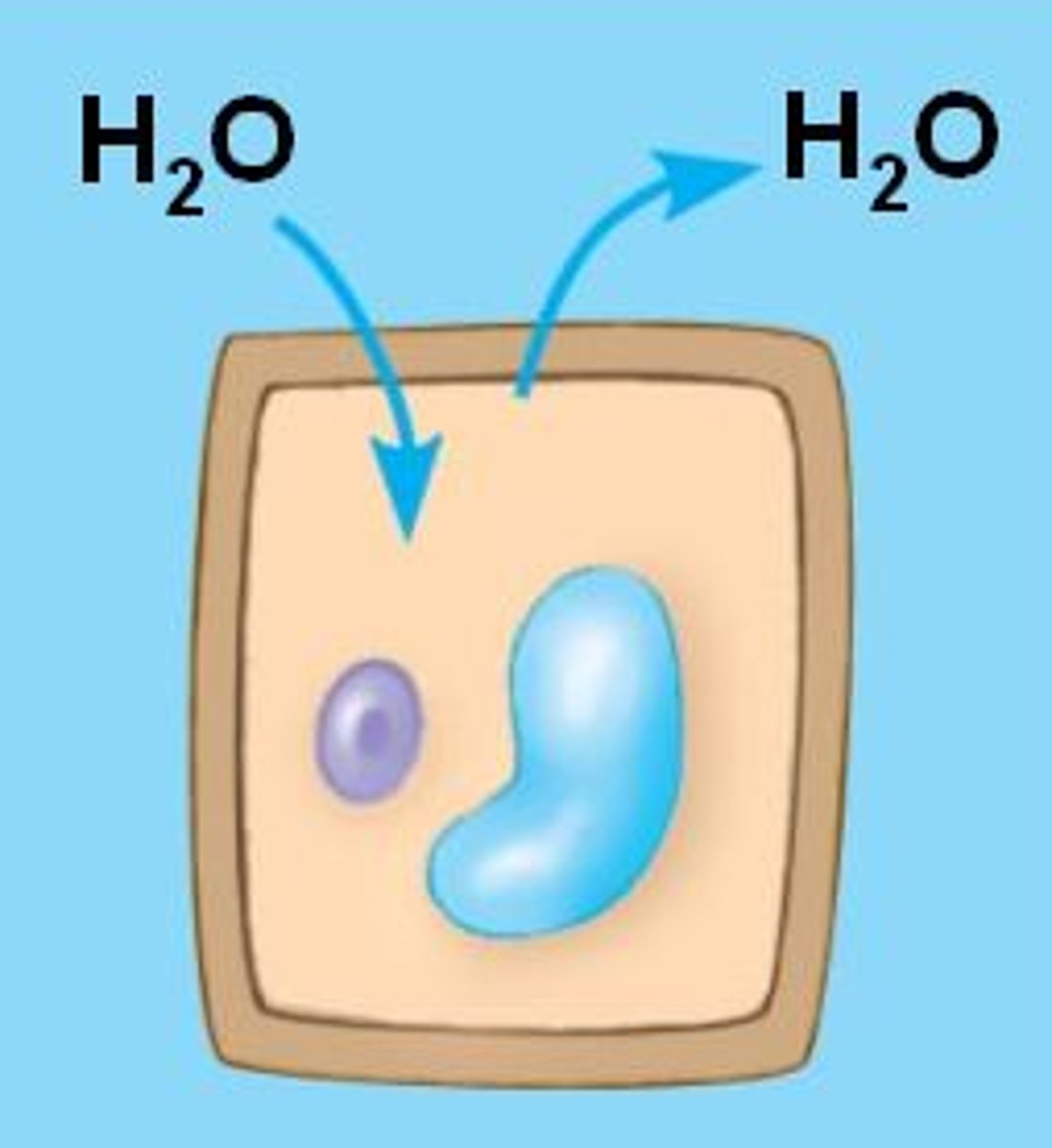
hypertonic (plant cells)
the plant cell loses water, its volume shrinks. The plasma membrane pulls away from the wall, this is plasmolysis. It is lethal to the cell.
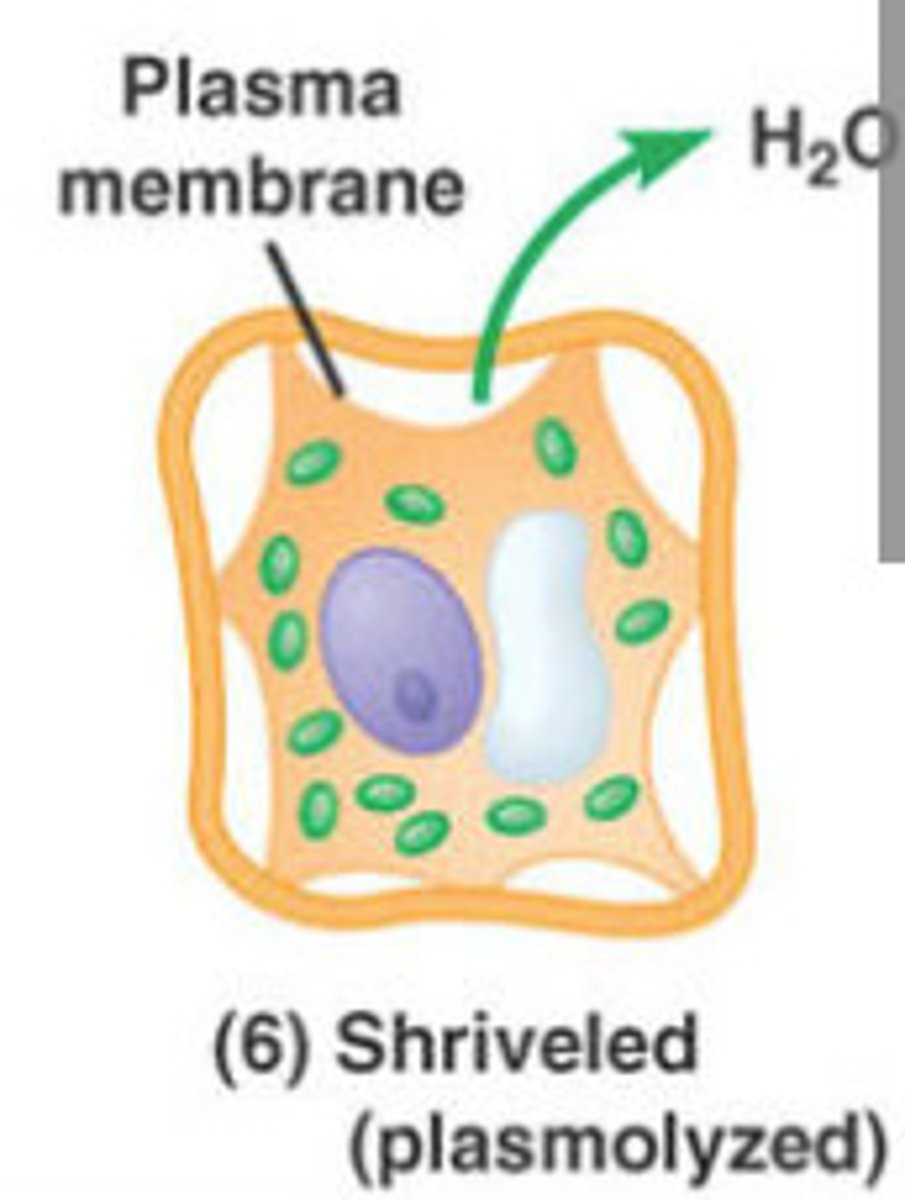
plasmolysis
This happens when a cell shrinks inside its cell wall while the cell wall remains intact. The plasma membrane pulls away from the wall.
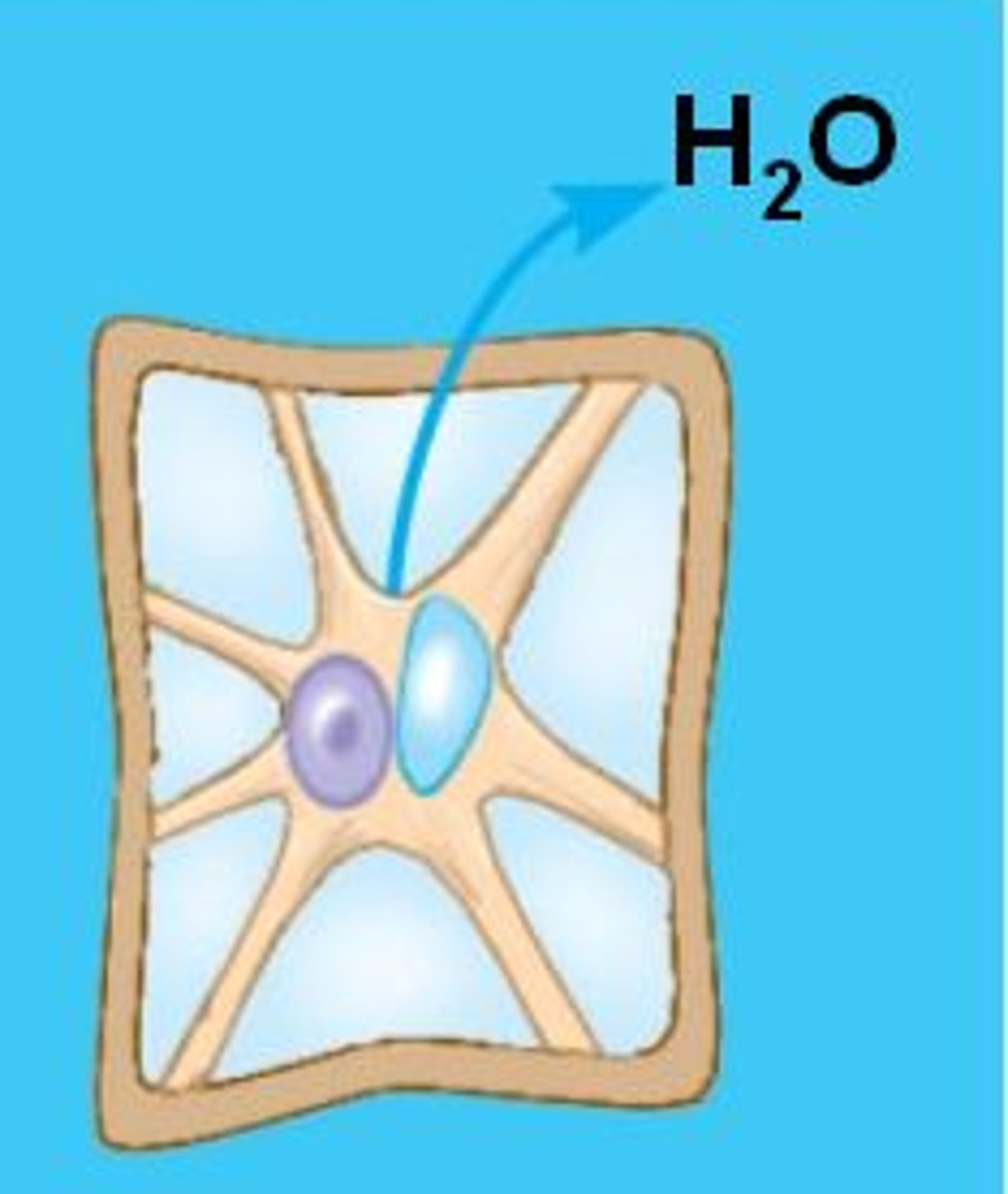
facilitated diffusion
the passive movement of molecules down their concentration gradient with the help of transport proteins.
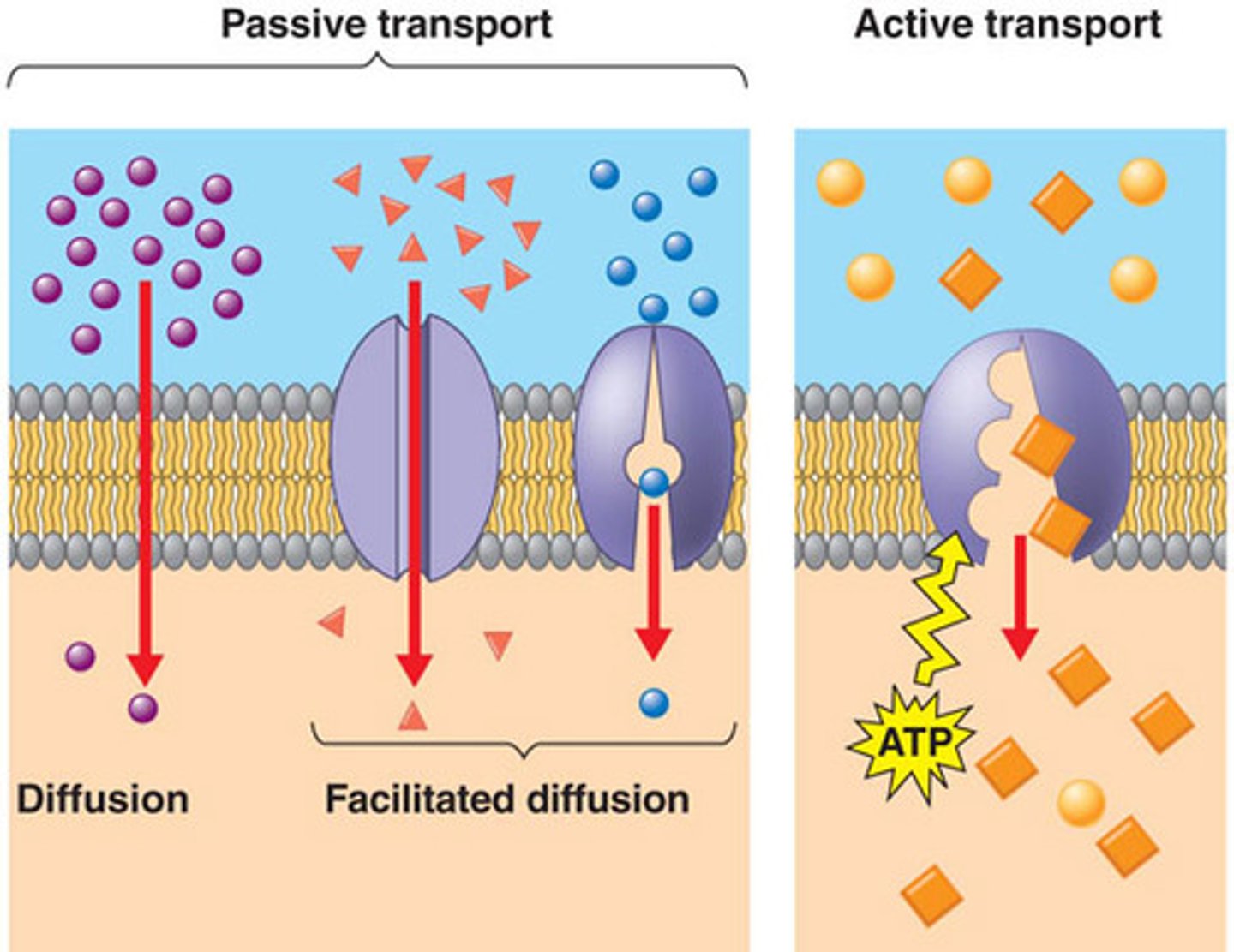
ion channels (gated channels)
Channels that open or close depending on the presence or abscence of an electrical, chemical, or physical stimulus.
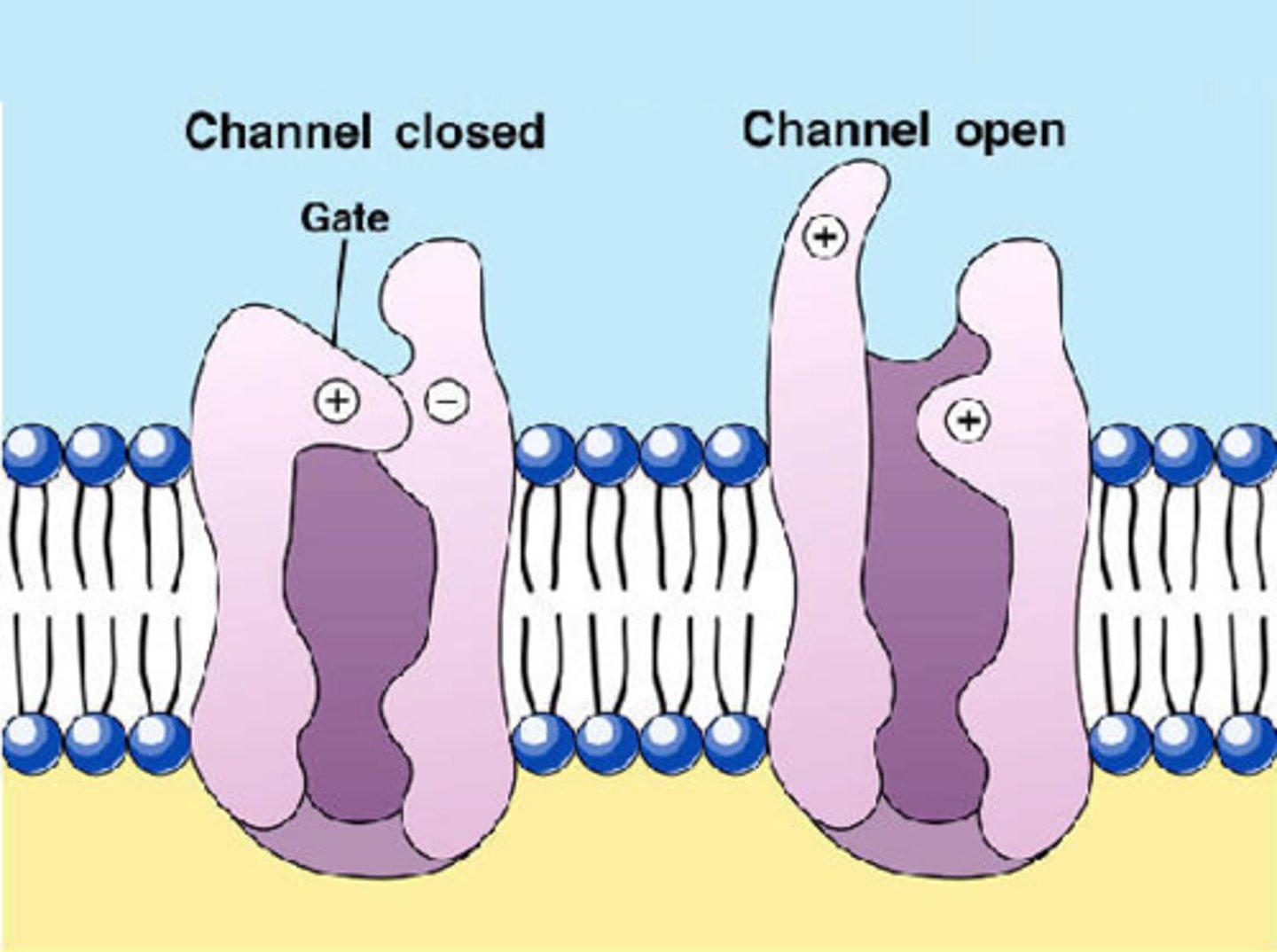
active transport
transport that requires the cell to expend metabolic energy and enables a cell to maintain internal concentrations of small molecules. Requires ATP hydrolysis.
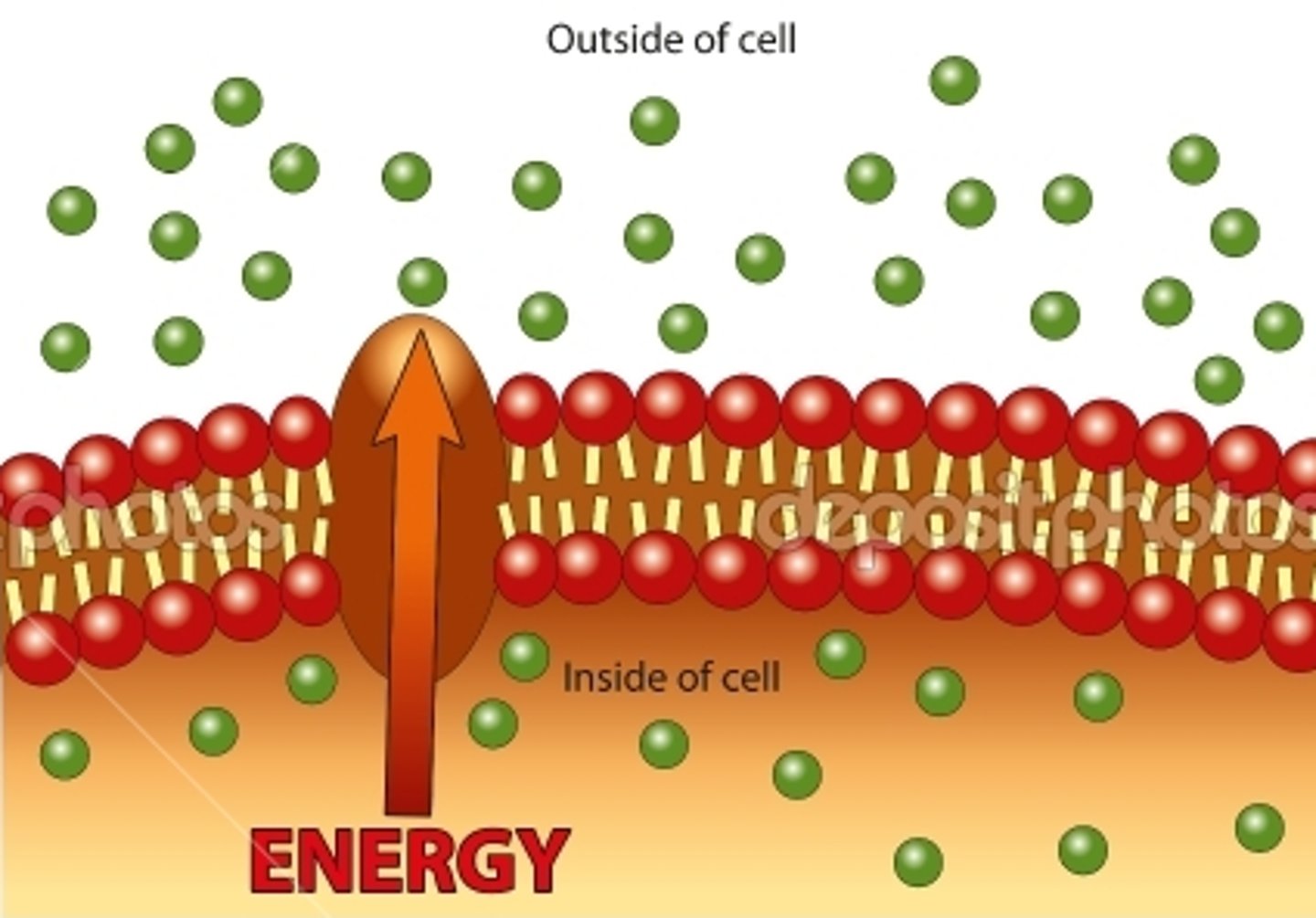
ATP
supplies energy for most active transport
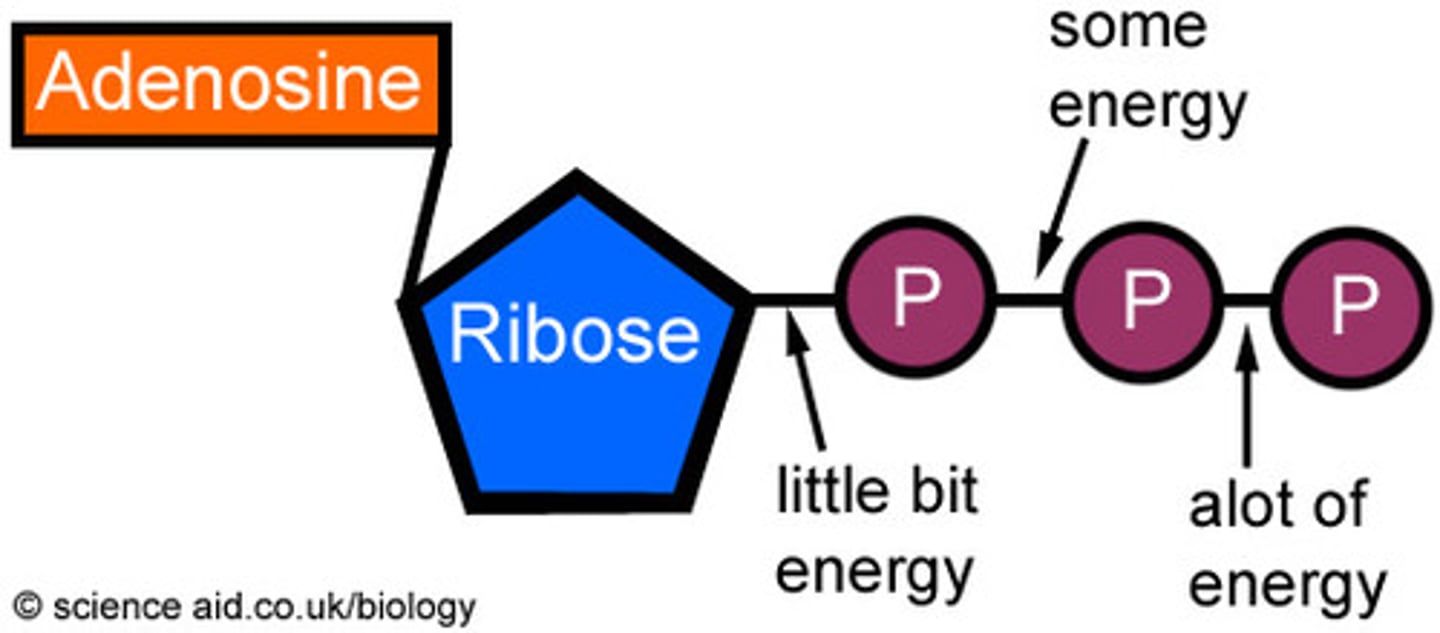
sodium-potassium pump
transport protein that, translocating the bound solute across the membrane. Exchanges sodium ions (Na) for potassium ions (K) across the plasma membrane of animal cells.
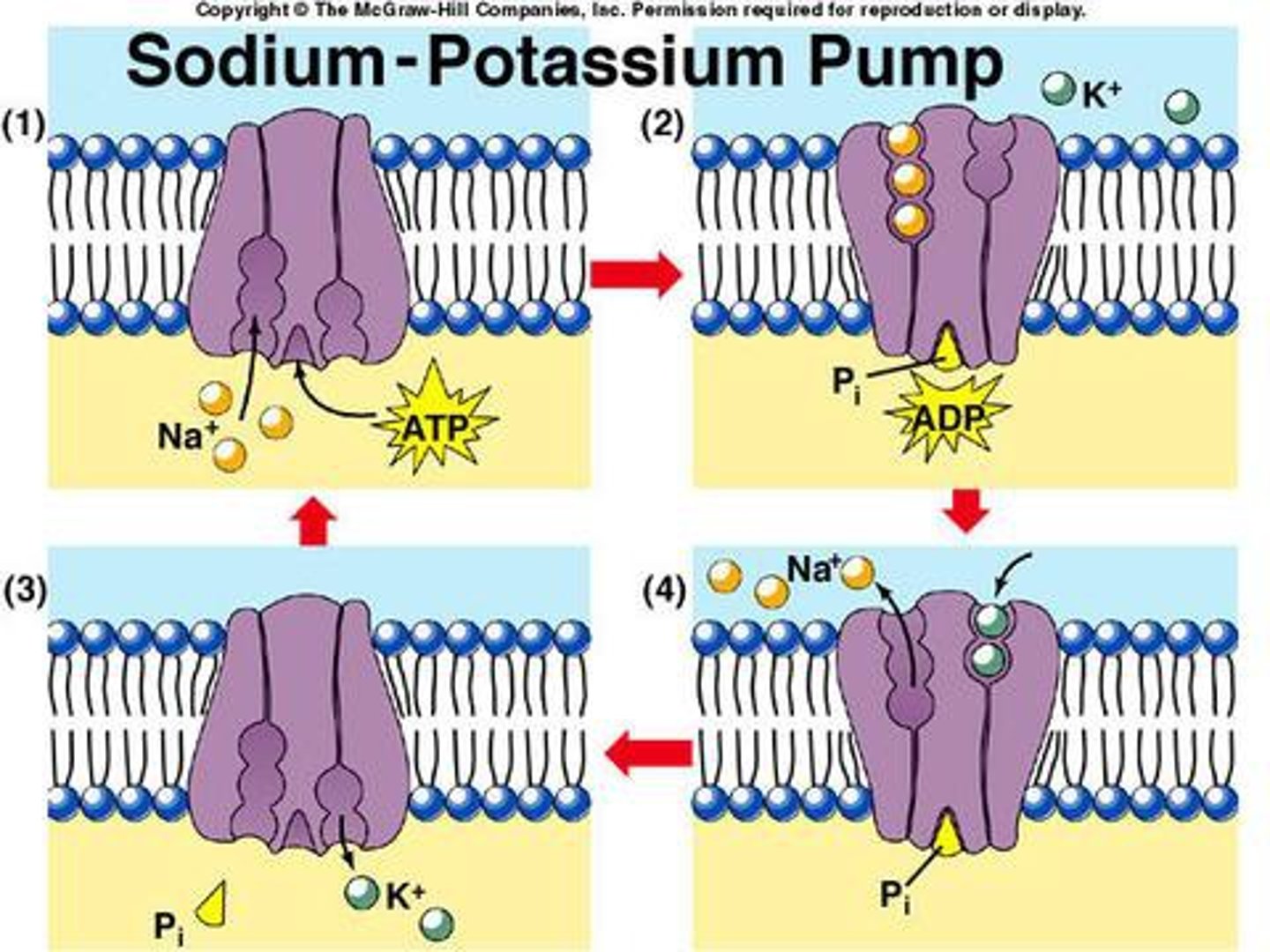
membrane potential
voltage across a membrane. Ranges form -50 to -200 millivolts. The inside of the cell is negative to the outside.
electrochemical gradient
2 combined forces drive the diffusion of ions across the membrane.
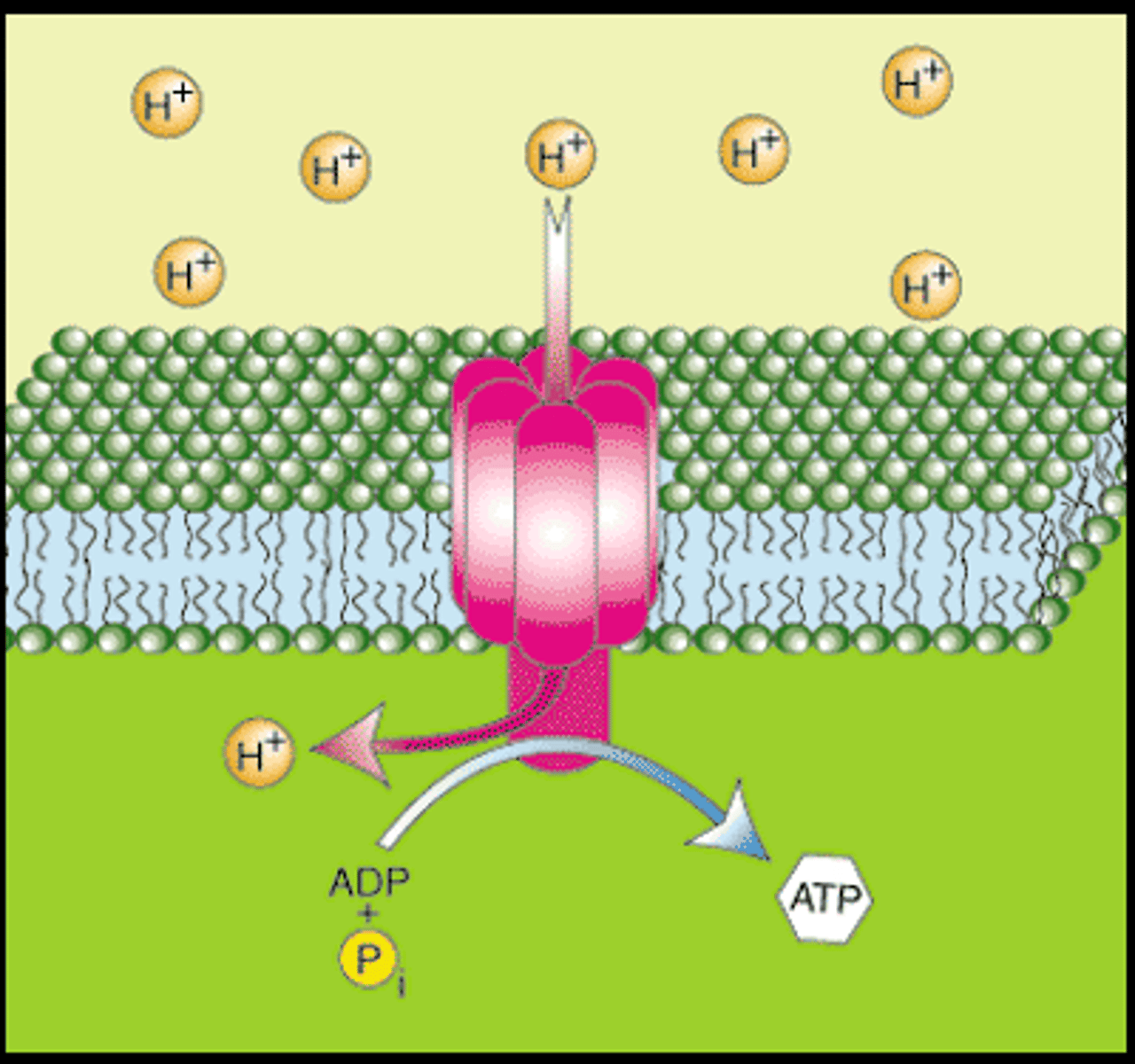
electrogenic pumps
special transport proteins that generate the voltage gradient across a membrane.
Ex. sodium potassium pump and proton pumps.
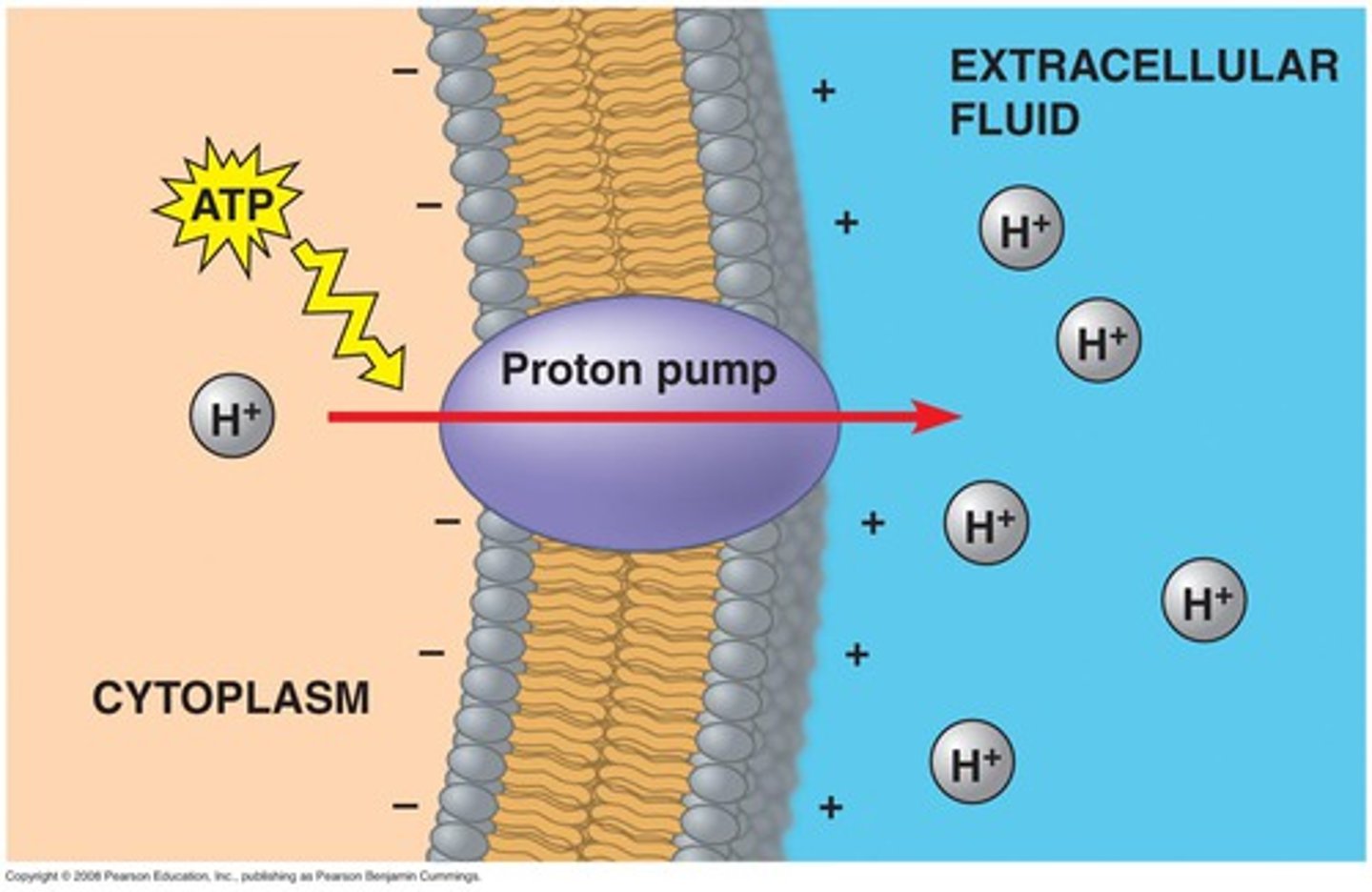
sodium-potassium pump
major electrogenic pump in animals. Restores the electrochemical gradient by setting up a concentration gradient. It pumps 2 K ions for every 3 Na ions that it moves out, it generates a voltage.
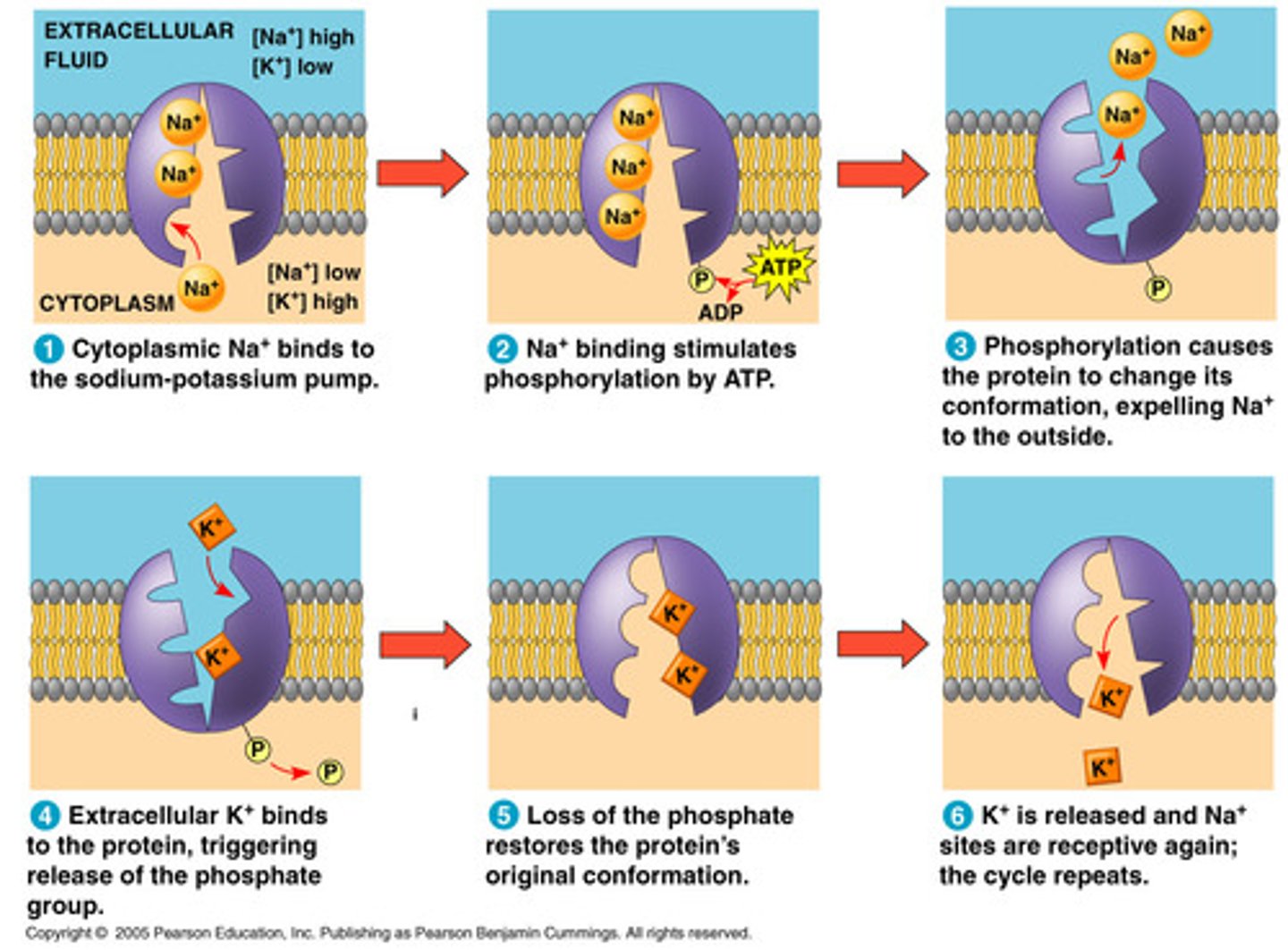
proton pumps
the major electrogenic pump. Transports protons out of the cell and transfers positive charge form the cytoplasm to the extracellular solution.
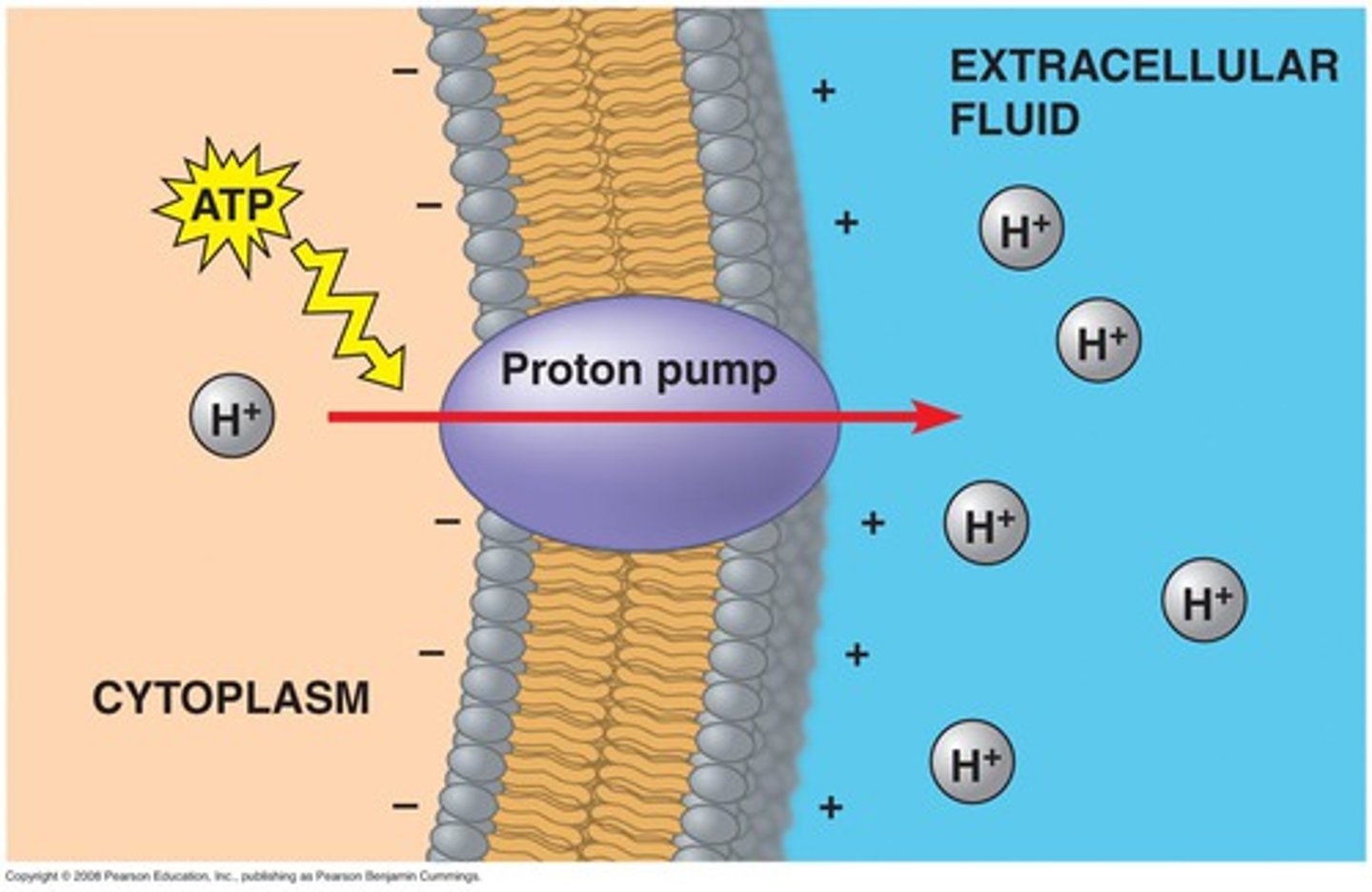
exocytosis
transport vesicle budded from the Golgi apparatus is moved by the cytoskeleton to the plasma membrane. When the 2 membranes come in contact, the bilayers fuse spill the contents.
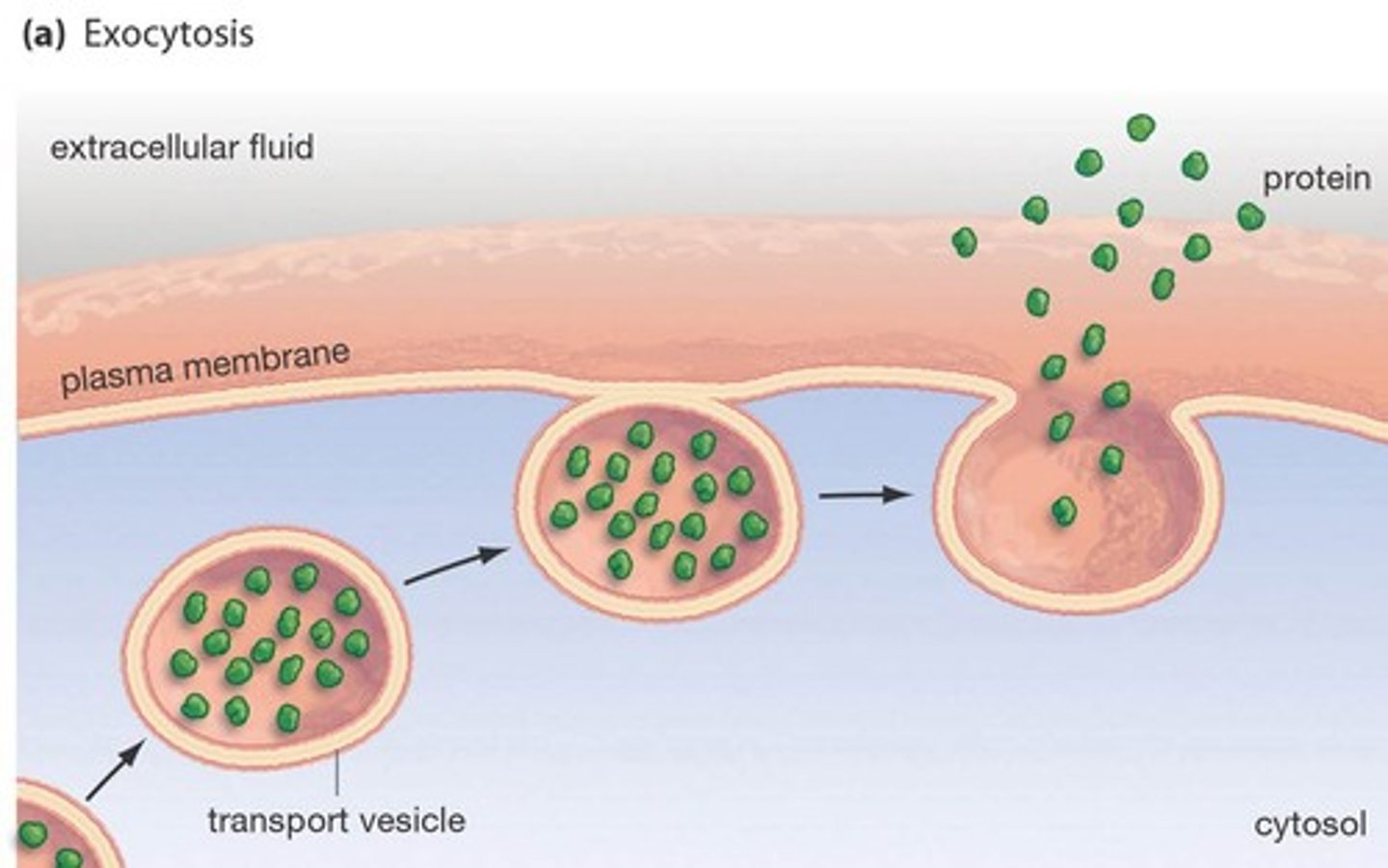
endocytosis
a cell brings in biological molecules and particulate matter by forming new vesicles from the plasma membrane.
3 types: phagocytosis, pinocytosis and receptor-mediated endocytosis.
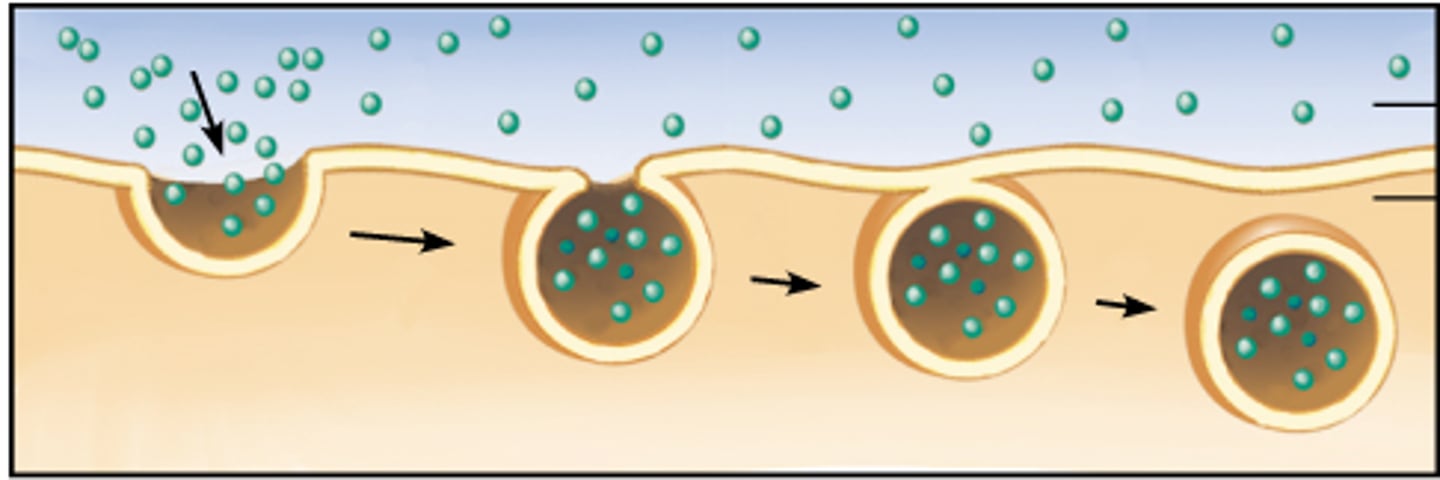
phagocytosis
a cell engulfs a particle in a vacuole. The vacuole fuses with a lysosome to digest the particle.
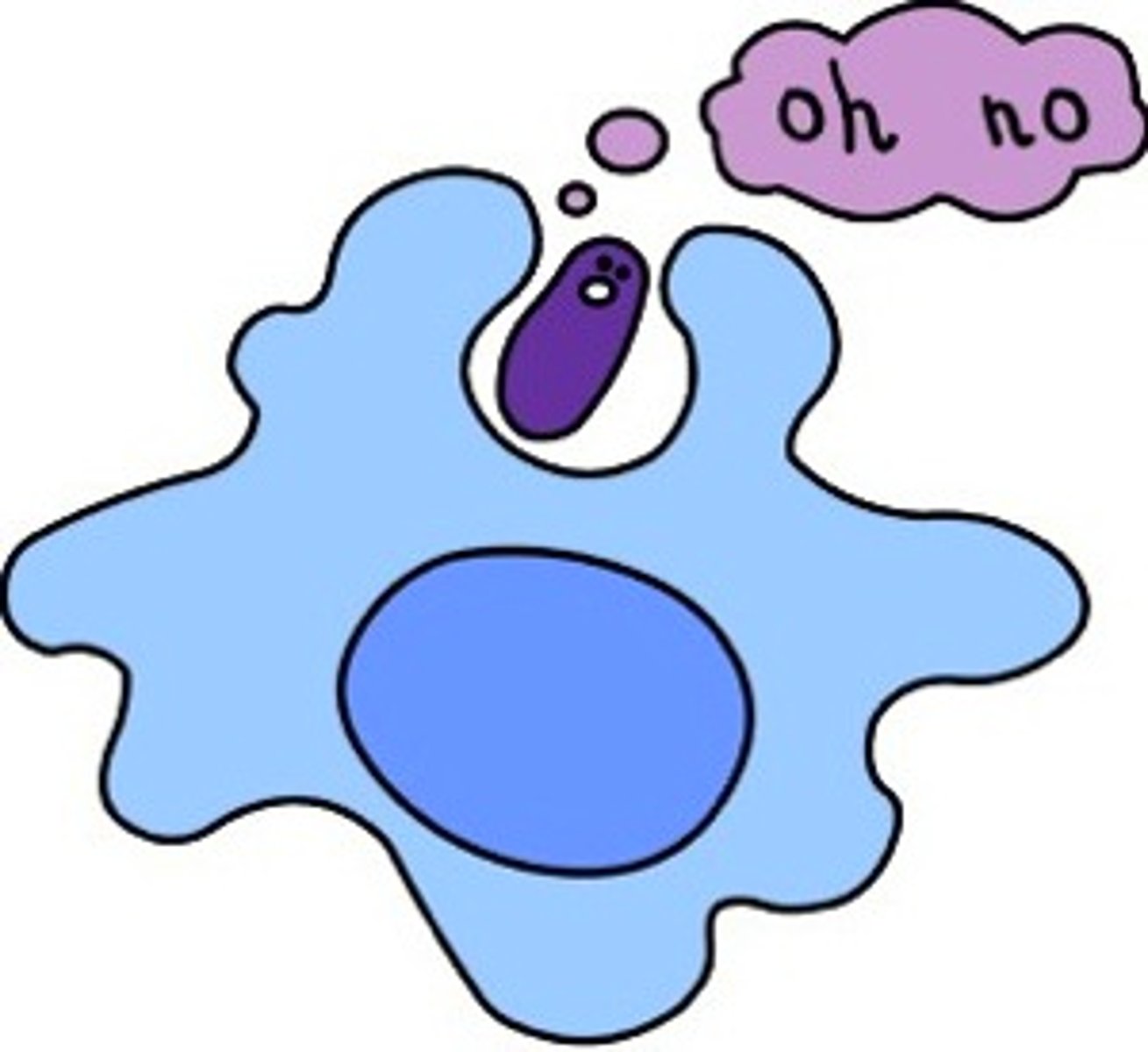
pinocytosis
molecules are taken up when extracellular fluid is "gulped" into tiny vesicles.
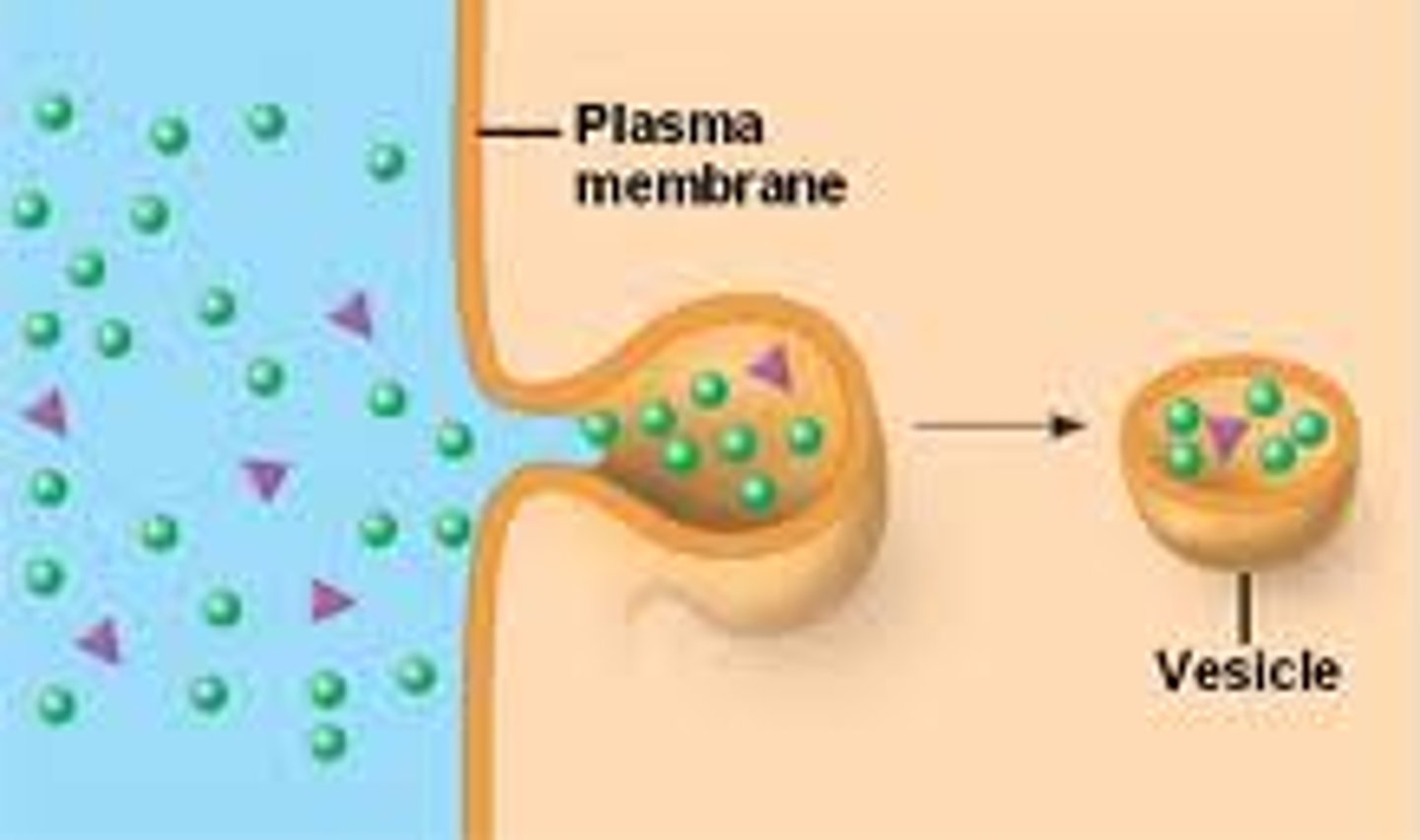
receptor-mediated endocytosis
endocytosis that enables a cell to acquire bulk quantities of specific materials that may be in low concentrations in the environment.
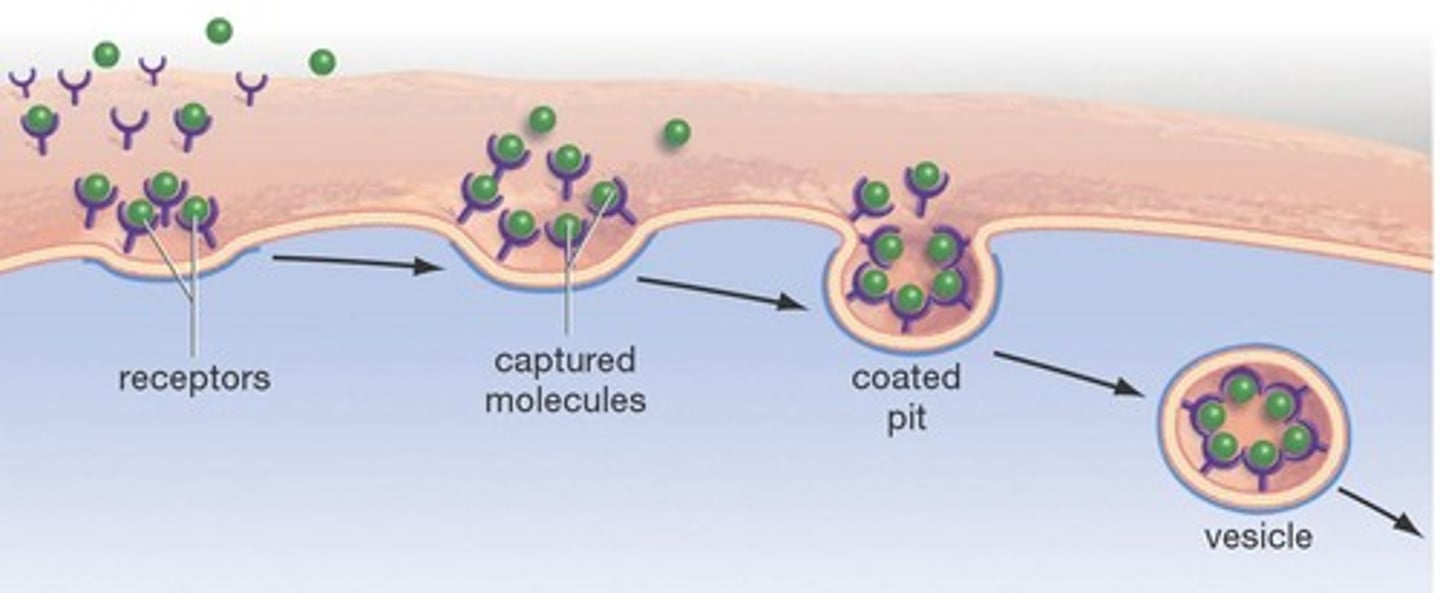
Action Potential
A momentary reversal in electrical potential across the membrane of a neurone that occurs when the cell has been activated by a stimulus.
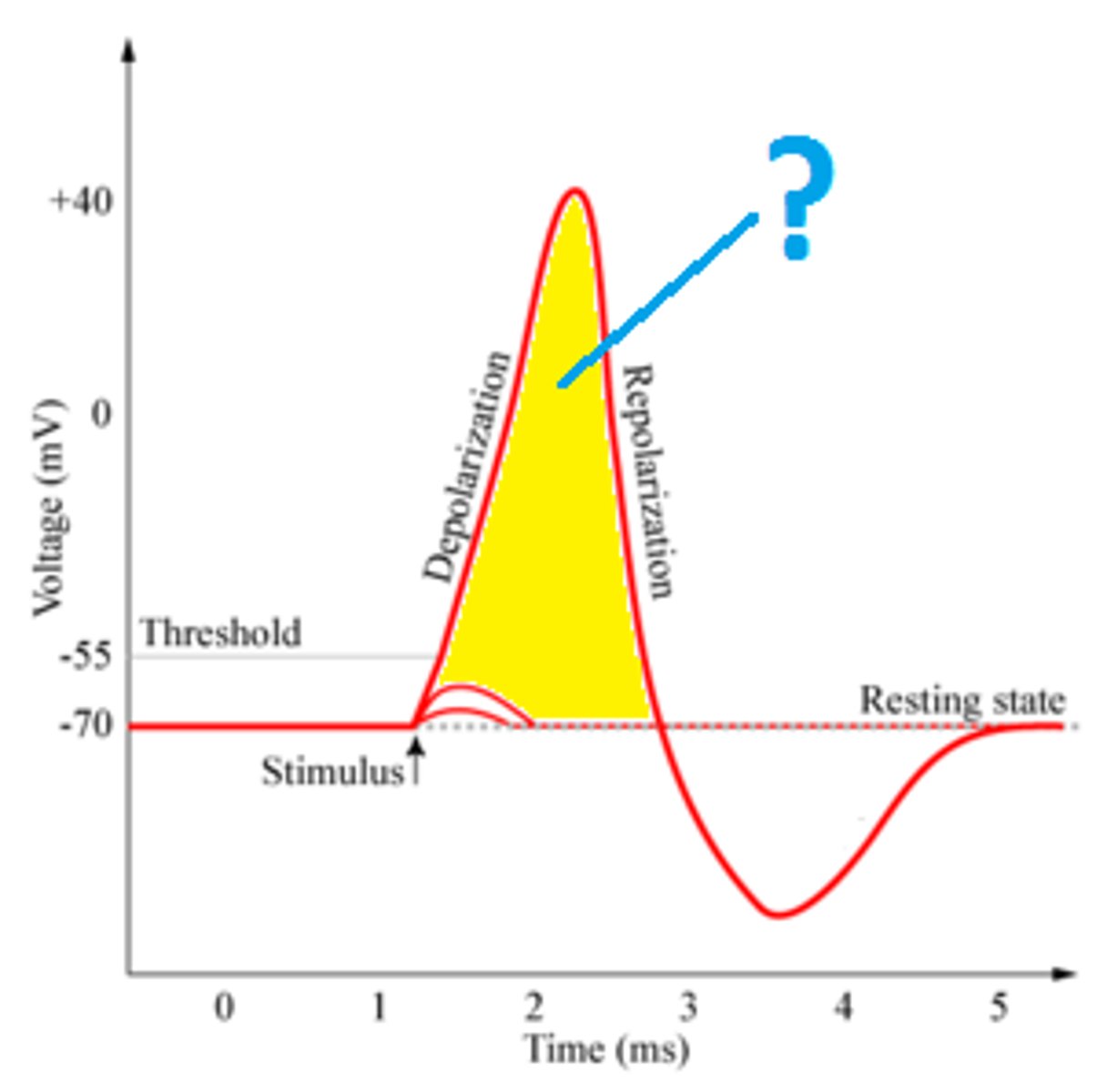
depolarization
Na+ channels open, allowing efflux of Na+, and cell becomes more potivie.
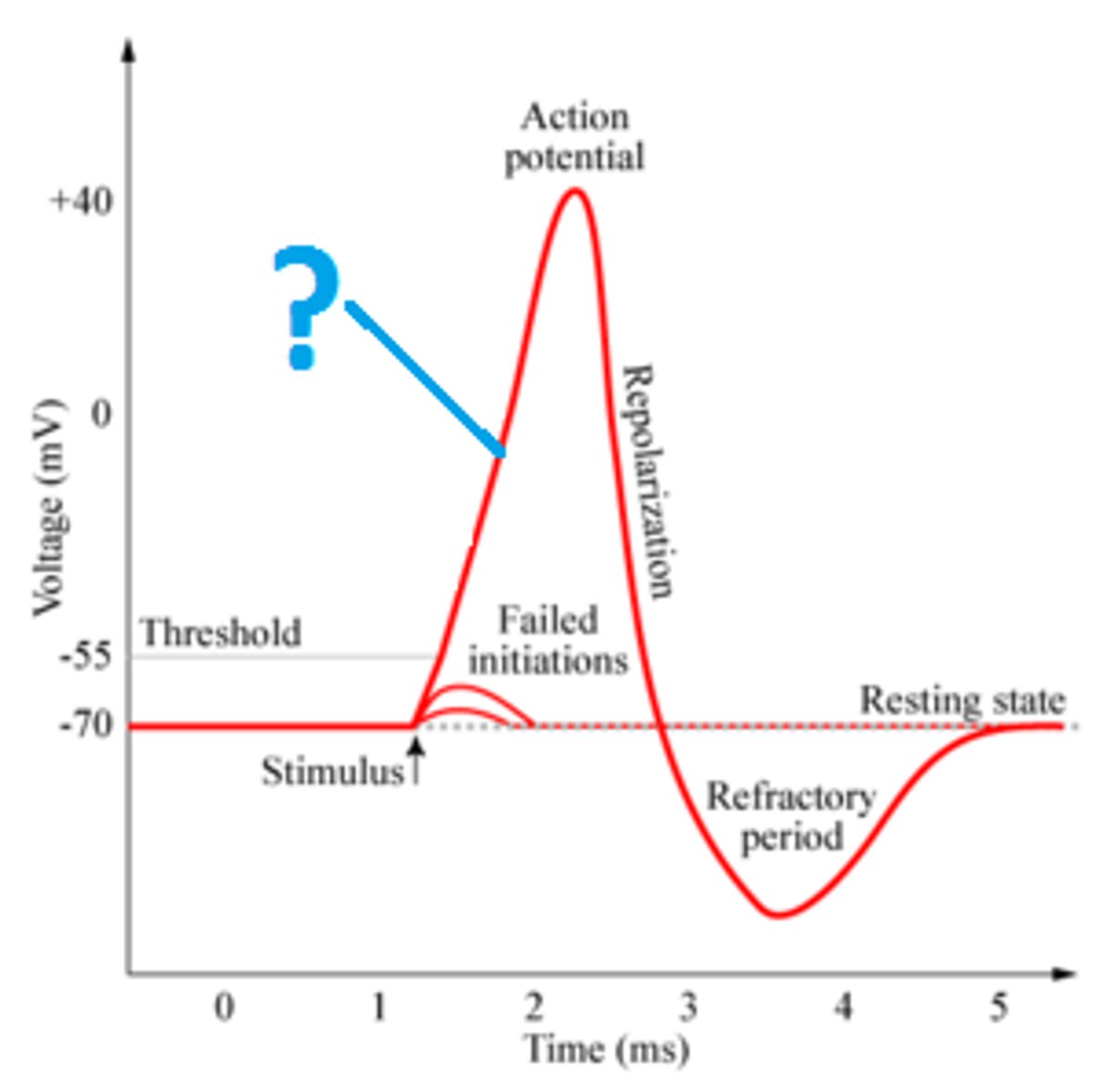
repolarization
K+ channels open, allowing efflux of K+, and cell becomes more negative
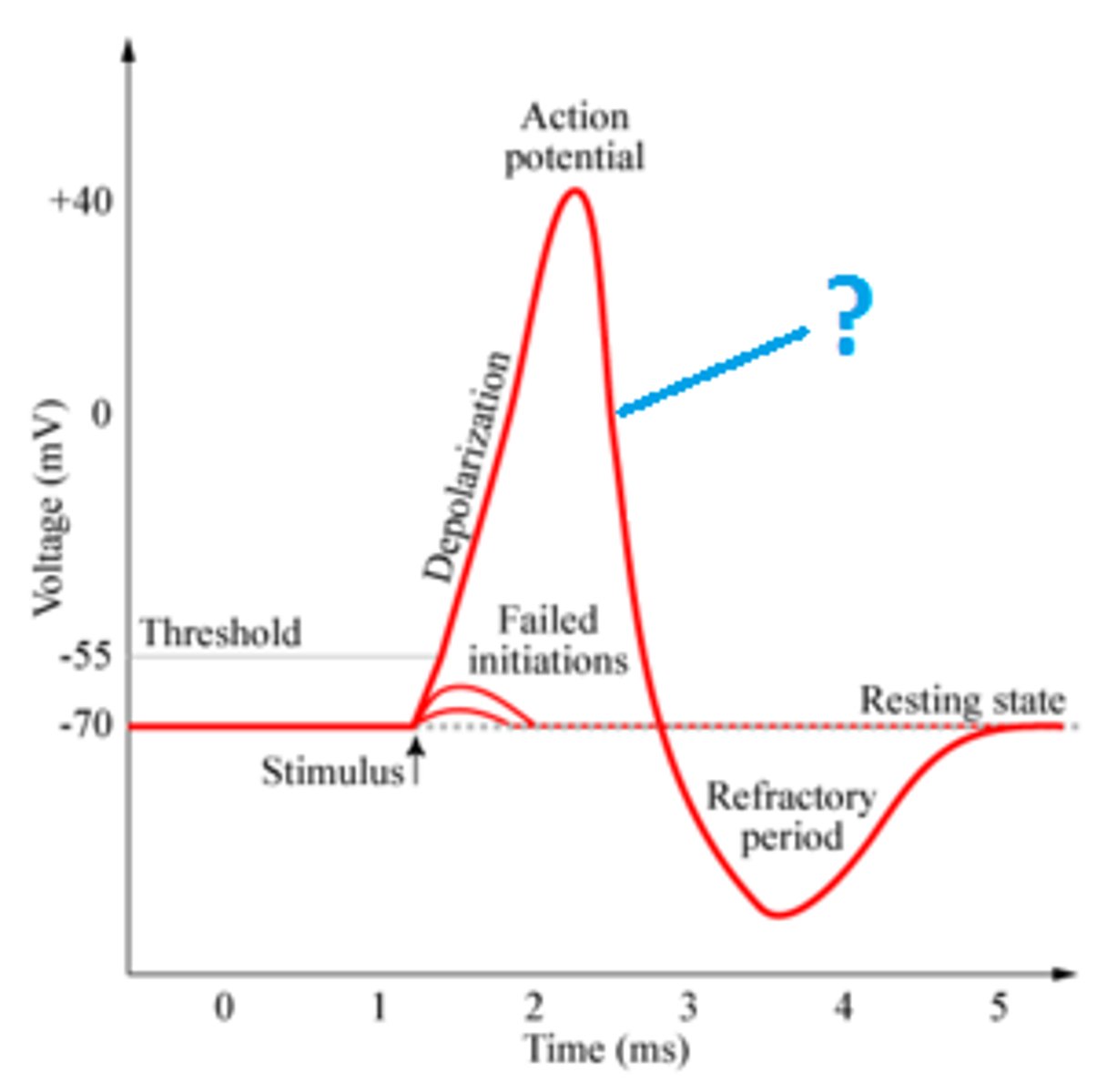
refractory period
The period following an action potential, in which another action potential cannot be generated. This means action potentials are unidirectional and allows the cell to restore ions on the correct side of the membrane.
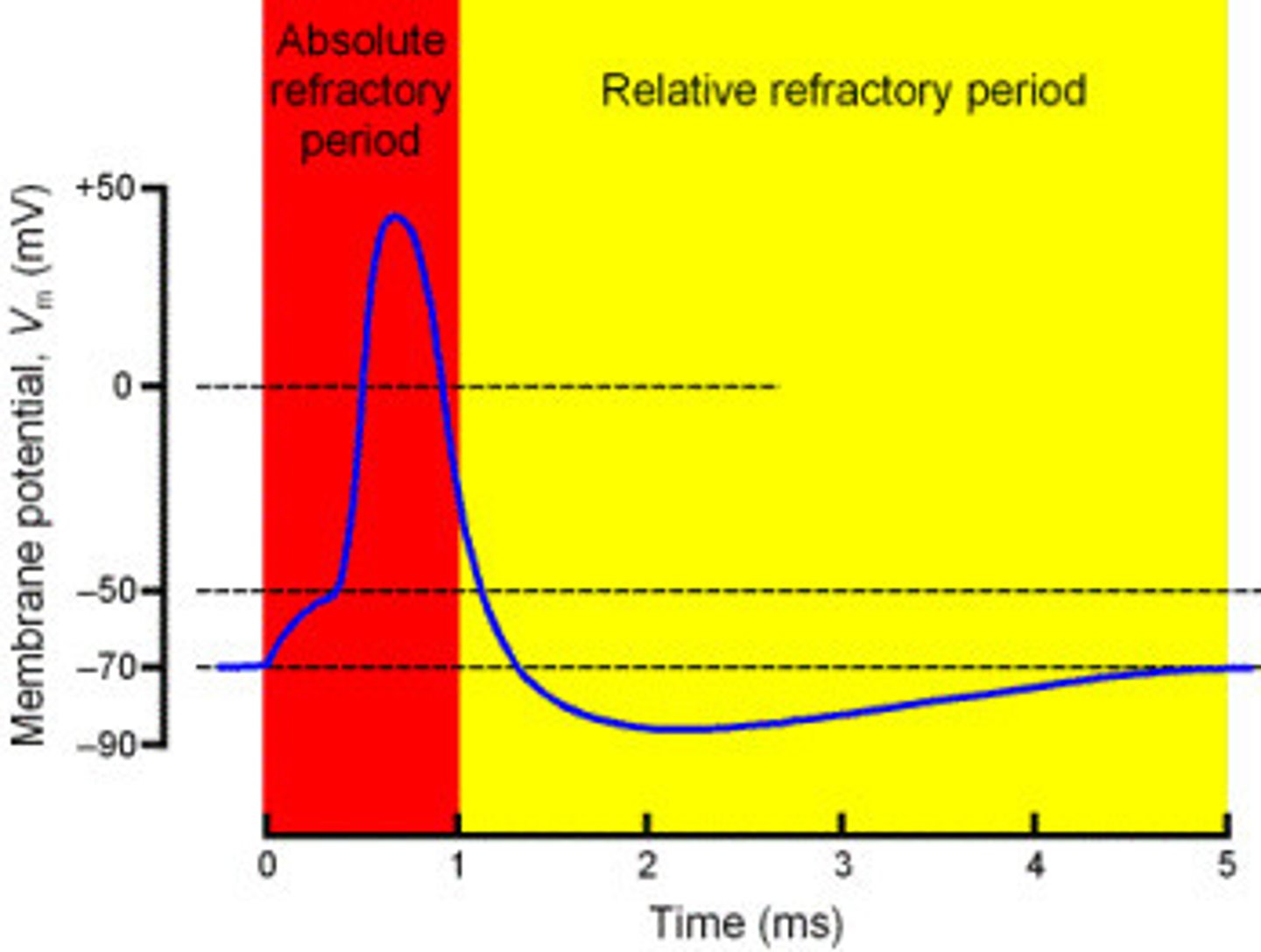
Hyperpolarization
K+ gates shut too slowly, causing the membrane to get too negative
Ion channel
A transmembrane protein which has a pore /hole that allows ions to pass across the cell membrane passively or by voltage gradients.
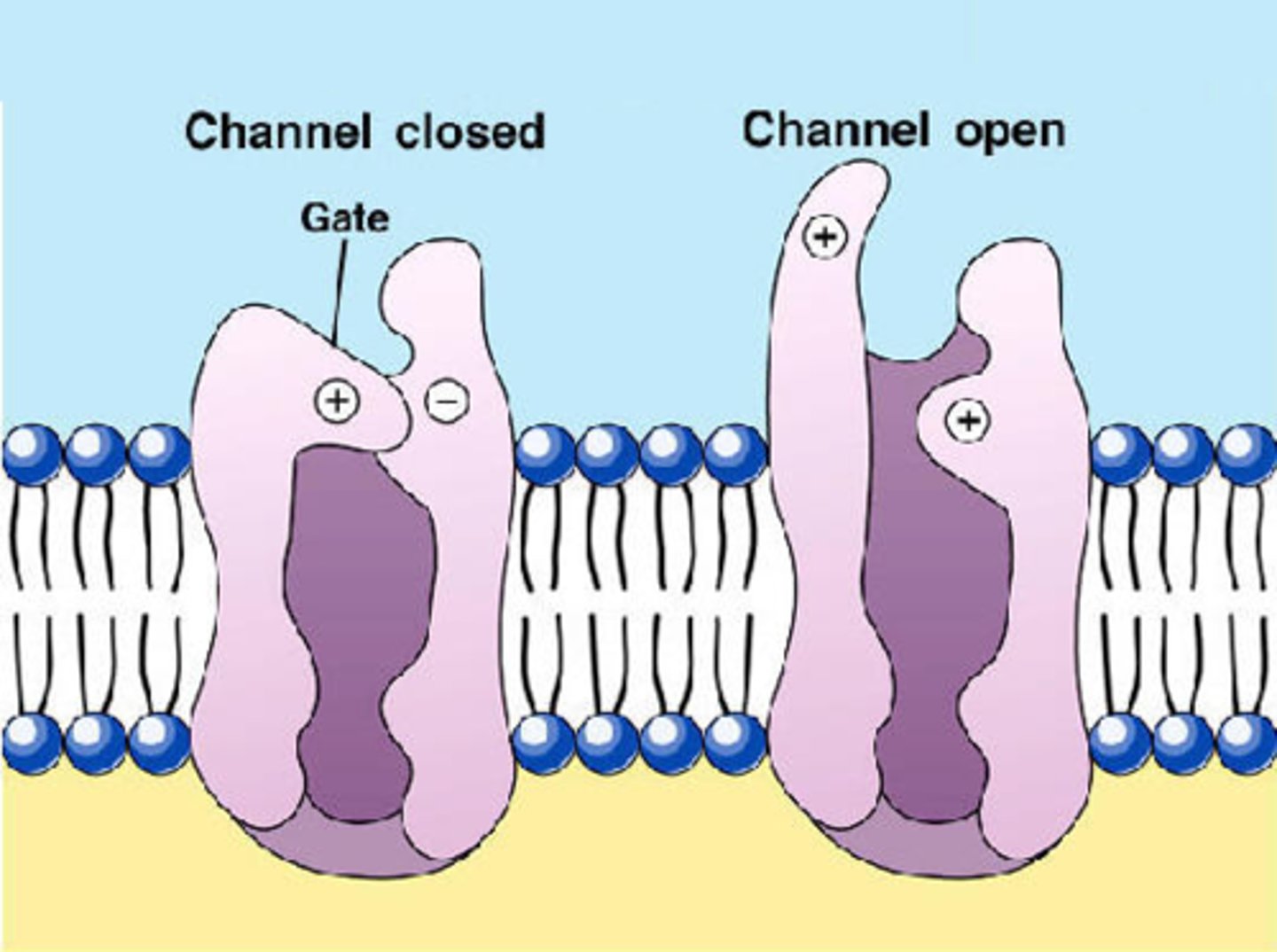
Voltage gated channels
An ion channel that opens (transiently) in response to changes in membrane potential.
Mitochondria
organelles that convert chemical energy stored in food into celluar energy
Lysosome
An organelle containing digestive enzymes
Peroxisomes
Contain oxidase enzymes that detoxify alcohol, hydrogen peroxide, and other harmful chemicals
Chloroplast
An organelle found in plant and algae cells where photosynthesis occurs
Ribosomes
site of protein synthesis
Smooth Endoplasmic Reticulum (SER)
Fatty acid and steroid synthesis; detoxifies toxic substances
Rough Endoplasmic Reticulum (RER)
processes and transports proteins made at attached ribosomes; synthesizes phospholipids
Golgi apparatus
stack of membranes in the cell that modifies, sorts, and packages proteins from the endoplasmic reticulum
Centrioles
a minute cylindrical organelle near the nucleus in animal cells, occurring in pairs and involved in the development of spindle fibers in cell division.
Nucleolus
Found inside the nucleus and produces ribosomes
Cytoskeleton
network of protein filaments within some cells that helps the cell maintain its shape and is involved in many forms of cell movement
Flagella
A long, whip-like filament that helps in cell motility. Many bacteria are flagellated, and sperm are flagellated.
Vacuoles
Cell organelle that stores materials such as water, salts, proteins, and carbohydrates
Vesicles
small membrane sacs that specialize in moving products into, out of, and within a cell
Cytosol
The semifluid portion of the cytoplasm.
Chromoplasts
type of plastid that stores pigments that are responsible for the bright colors in fruit and flowers